




By John Yoswick Autobody News
Collision repairers say there’s still a long way to go before current systems that can help automate some aspects of estimating are able to produce something closer to the repair plan shops need, but some see the systems still offering some potential time-savings for shops.
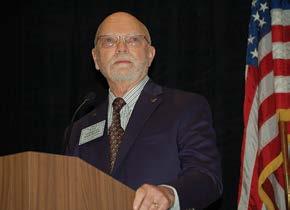
Darrell Amberson of the LaMettry’s Collision chain of shops in Minnesota said he’s seen improvement in the systems that help repair planners locate the necessary OEM repair procedures for a given job. But he’d like to see so-called “AI-enabled” estimating systems get closer to creating detailed repair plans rather than just the automated preliminary estimates they do today.
“There’s a whole bunch of operations that you have to know about to look for that are not included or that may require some judgment,”
Amberson said during a Future Disruptions Committee discussion at the Collision Industry Conference (CIC) this summer. “At what point could we get more and more of those automated?”
The current photo-estimating systems, he said, primarily automate only the “write what you see” portion of what’s needed, which is likely more helpful for insurers than shops.
“I use the analogy of an egg in the bag,” Amberson said. “If you put an egg in a bag and I smash it, and I’m going to write an estimate on it, I can see it needs a bag, but really, I know it needs an egg, too. Couldn’t we get to that point that the initial estimates could recognize that as well?”
While not disagreeing that current automated estimating systems aren’t perfect, some collision repairers see them as potentially useful within their shops.
Andrew Batenhorst, manager of Pacific BMW Collision Center in Glendale, CA, recently offered a demonstration at an industry meeting of how his shop uses Mobile Jumpstart in the CCC ONE app to quickly create initial estimates.
“They have a lot of data in their system that they can use to identify some of the low-hanging fruit to let us make a very quick determination of what a repair cost might be,” Batenhorst said. “It requires taking only a handful of photos, and a few keystrokes on your phone.”
l CONTINUED ON PAGE 16
By Elizabeth Crumbly Autobody News
Florida collision professionals are trying to stay a step ahead of the industry curve by banding together. This October, after years without an official state-level organization, the Florida Auto Body Association will celebrate its inauguration with a weekend-long kickoff event in Orlando.
“It’s really important that we have a united front as far as education and the procedures that are coming our way,” said FABA Vice President Leo Serrano about the decision to start a new association at a time of change for the industry.
‘This Makes Sense’
The start came about, he said, when Ementi Coary, a longtime industry networker and executive director of the Oklahoma Auto Body Association, began circulating the idea among Florida shops late last year.
“The idea just kind of caught on,” Serrano said. “We said, ‘Absolutely. This makes sense. It’s something that we’re interested in doing.’”
This first event Oct. 19 will include a talk from Collision Advice owner and Autobody News columnist Mike Anderson, along with food, vendors and networking.
by Elizabeth Crumbly Autobody News
Jerry Dalton’s time in body work began with a few wrecked cars and the idea to get them back on the road. It was 1991, and he was in his late 20s, doing paint work on Sea Ray boats when he started buying damaged Hondas and restoring them to drivable condition with new parts.
“We fixed and sold several Hondas, and I had some people helping me.

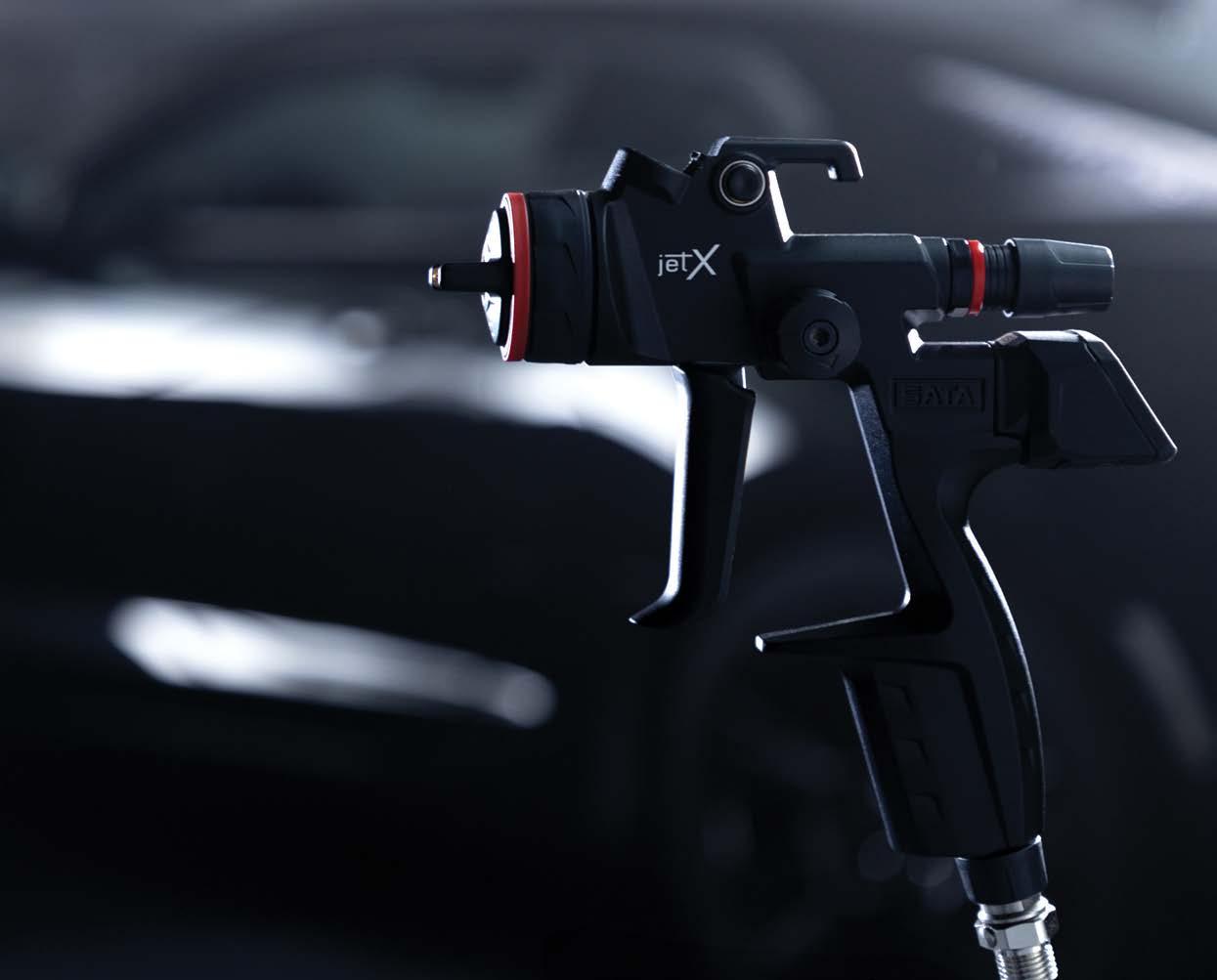




Mike Anderson
Shops, Insurers, OEM Parts Wholesalers Need to Understand Each Other’s Perspectives 6
Abby Andrews
As Vehicles Evolve, So Too Must the Insurer-Collision Repair Relationship 22
Is Your Shop Overlooking Potential ‘Hidden’ Profit Centers? 27
Maximizing Collision Shop Profitability: Key Strategies for Financial Growth, Labor Efficiency 13
Porsche Technology Apprenticeship Program Celebrates 25 Years of Tech Training Excellence 12
Brian Bradley AI in Collision Repair: Applications, Challenges and Efficiencies 34
Elizabeth Crumbly
Florida Auto Body Association Kickoff Will Unite State’s Collision Repair Professionals 1
Legacy Shops May Be Fewer, But Specialization Can Help Preserve Tradition 8
Mitch Dean: Church, Family, Community, Collision Work 10
Anderson Automotive Group Sells 2 South Carolina Dealerships 33
3M Clean Sanding System Now Available 32
Autel Releases Guided ADAS 17
Repair Roundtable: How Jerry Dalton’s Tennessee Collision Centers Growth Went from Organic to Intentional 1
Paul Hughes
Retiring Shop Owners Exit Industry for More Than Just Consolidation or ‘It’s Time’ 31
Stacey Phillips Ronak
Blockchain Can Secure Data for 3D Printing in Collision Repair 9
Build Your High-Performance Team with Strategies from Collision Advice Coach Sheryl Driggers 4
Leona Scott 5 Reasons Auto Body Shops Are Bringing Their Glass Operations In-House 18
John Yoswick
Automated Estimating Seen as Far from Perfect, but Potentially Useful for Shops 1
Blending Process More Complex, Variable Due to Several Factors 37
Hunter Engineering Wins 2024 MOTOR Top 20 26 Mitchell, PAVE Collaborate to
36


There’s a common misconception many business leaders have, according to Collision Advice Coach Sheryl Driggers: to influence someone, you have to be in control of them.
“What I learned over the years is that the more you try to control people, the less influence you have,” said Driggers, a certified coach and trainer for John Maxwell’s organization, Maxwell Leadership, and a Maxwell certified behavior analysis trainer.
Over her career, Driggers has shared the stage with best-selling author Chris Voss and is a contributing author to Voss’s latest book, “Influence and Impact.” Her chapter focuses on the four pillars she recommends to build high-performing teams: Inner Work, Outer Impact; Know and Grow Your Team; Unify & Clarify; and Persevere with Purpose.
During the Car ADAS Solutions Business Owners’ Summit in August, Driggers talked about the four pillars in her presentation, “From Influence to Impact: The Path to High-Performance Teams.” She provided insight on how to become a leader people want to follow and the importance of building leaders within the organization.
As the co-owner of a Tallahasseebased collision center that grew to include three locations and was later sold, Driggers said she spent many years with the mindset of “I’m the boss; you’re the employee.”
“We did not get consistent results from that type of leadership,” she said.
Driggers found it can lead to burnout because of the weight on the leader’s shoulders trying to control and do everything. “When owners and managers engage and start developing team members and providing resources to help them grow, they become engaged,” she said.
Otherwise, Driggers said, businesses end up with disengaged employees who can drain the business of its life and energy.
Driggers noted the range of toxic leadership styles and said whatever is inside each of us will inevitably manifest itself externally.
“Have you ever worked with someone who was a perfectionist and demanded perfection, even though that’s not a reality?” she pointed out. “Or someone with anger issues or
who doesn’t like conflict?”
When leading from those mindsets, Driggers said leaders don’t produce high-performing teams.
“We have to do the hard work to become the person people want to follow,” she emphasized.
or gravitate towards building relationships. Driggers said leaders need to be effective at both.
“It’s not one or the other; however, people are always the priority,” she said. “Relationships fuel results.”
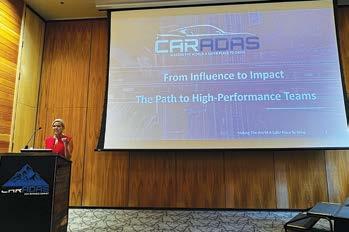
To build high-performing teams, Driggers recommends getting to know employees and empowering them to grow. To do this, she advocates taking time to understand their strengths, needs and potential, and then providing the resources and support they need to flourish.
“Our team members want to be known, heard and valued,” she stressed. “We have to be intentional and listen to understand, as well as build trust.”
3. What do we do?
4. How will we succeed?
5. What is our current SMART (Specific, Measurable, Achievable, Relevant and Time-Bound) goal?
As a result of her team answering the questions, they created the company’s “why,” and Driggers said they no longer micromanaged staff.
Driggers advises leaders to work with teams to remove distractions. She also suggests breaking down silos to create a culture of collaboration.
“We win together and we lose together,” she said. “Align your leadership team and organization by unifying around a common vision and creating crystal-clear clarity on roles, goals and execution.”
Driggers explained that outer impact means cultivating self-awareness when you start seeing yourself through the lens of other people.
Driggers advises leaders to regularly engage in self-reflection exercises to assess how their actions and words impact others. She also suggests inviting people you trust to reveal your blind spots and embrace their feedback openly rather than defensively.
“Hurt leaders hurt teams and insecure leaders infect those around them,” she said.
To help determine the impact leaders have on team members, Driggers recommends asking the following questions:
1. How did my actions and words impact my team today?
2. Did I notice any changes in team morale or productivity based on my behavior?
3. Were there any moments where I could have approached a situation differently for a more positive outcome?
4. What can I learn from today’s experiences to improve my leadership tomorrow?
“As leaders, we should be growing,” she said. “When the leader gets better, everyone gets better.”
Over the years, Driggers has found leaders typically focus on systems, processes and outcomes — key performance indicators (KPIs) —
One of the best ways Driggers said to find out if you have trust issues is to conduct employee engagement surveys.
She also shared an exercise she learned from Patrick Lencioni, author of “The Advantage,” to get to know employees. It involves asking three questions:
1. Where are you from?
2. How many siblings do you have and where do you fall in the order?
3. What is the most challenging or difficult thing you had to deal with growing up?
“It sounds so basic, but I remember sitting in that room with people I had known for over 10 years, and I learned so much through those three basic questions,” she said.
To be successful, Driggers encourages leaders to ensure everyone in an organization is rowing in the same direction with an understanding of what success looks like.
She suggests creating clarity within the organization so everyone understands the vision, mission and values. “What success looks like for you might not be what they have in mind,” she pointed out.
While running her collision repair facilities, Driggers said they developed a Universal Collision Playbook to help create their vision and mission and ensure everyone was on the same page. She worked with the leadership team to answer the following questions from Lencioni’s book:
1. Why do we exist?
2. How do we behave?
Driggers pointed out businesses and individuals face adversity every day. “We need to create a mindset of solutions, focusing on what we can control versus the things that we cannot,” she noted. “We have to persevere with purpose.”
In January 2015, Driggers joined Business Networking International. As part of her membership, she met with a member who happened to be an eye doctor.
“I remember walking in thinking I was going to have a networking conversation, but I walked out with a diagnosis that would change my life forever,” she recalled. “She did some imaging and found that I have a rare genetic disease that’s causing me to go blind. That was a punch in the face.”
Driggers said at some point in life, everyone will get punched in the face. In response, she recommends developing the mindset, grit and resilience required to lead through adversity, break down barriers, foster collaboration and maintain a steadfast commitment to your mission no matter what the challenge is.
Driggers also recommended leaders encourage team members to find solutions to problems.
“If you as a leader are the only person in your organization finding solutions, you will burn out quickly,” she noted. “In our businesses, we have to cultivate a resilient mindset and foster a culture of people being solution minded.”
To order “Influence and Impact,” visit a.co/d/gK8jeQP.


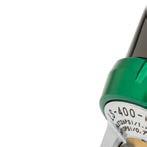



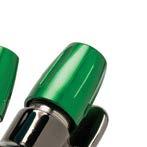



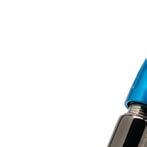
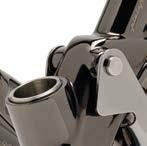
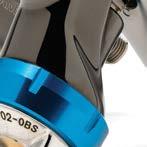
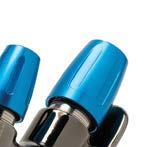




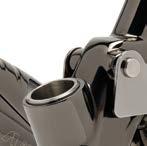

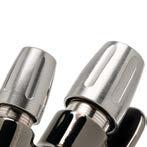
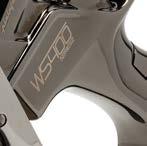
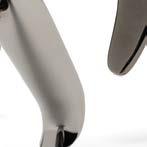


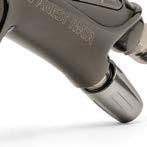





Mike Anderson — From the Desk of Mike Anderson
Over the past year or so, I’ve conducted 14 meetings across the U.S., bringing together collision repairers with corporate representatives, district managers and regional wholesale parts managers for one of the automakers. There was one goal for these meetings: to better understand each other’s perspective, and to share information with one another that would give all of the participants a clearer understanding of how the parts processes work between the various stakeholders.
to have their voice heard — and the purpose of my next few columns is to share their insights, their concerns, their pain points. Importantly, I hope to convey why hearing their voice should matter to all the other stakeholders.
When I first starting thinking about how to convey their voice through this column, in addition to all the various other perspectives I was hearing in those meeting rooms around the country from the shops and the other attendees, I wasn’t sure it could be done. There seemed to be so many important messages.

It has been a bit surprising to watch as the meeting attendees start to realize just how much they didn’t understand about what’s going on for companies on the other side of their day-to-day transactions. But it’s also been very satisfying to see them gain a whole new appreciation of how they can each be a better business partner to one another.
One of the things I realized through these meetings was that when we have industry events, we generally hear the voice of the OEMs, the voice of the shops and MSOs, the voice of the information providers, and sometimes the voice of the insurers.
But the voice of one industry stakeholder we do not generally hear is that of the wholesale parts distributor: the men and woman at dealership parts departments who deal with last-minute rush orders, who deal with price-matching pressures, who deal with multiple electronic parts ordering systems, who deal with shops that do not pay their bills on time or large MSOs who want payment terms that sometimes stretch out beyond 60 days — and so much more.
These men and women, these wholesale parts vendors, deserve
What?” surveys in regards to electronic parts software utilization.
If there’s a wholesale parts vendor reading this column and you’d like to share your insights, please reach out to me through my assistant, Tiffany Driggers , at tiffany@collisionadvice.com.
For now, I will close out this article by saying this: because the voice of the wholesale parts vendors is so rarely heard, shops and insurers may not realize those parts vendors are under tremendous pressure on their margins, with the increase of delivery driver wages, having to subscribe to multiple software electronic ordering platforms, etc.
Shops were saying what they are looking for from their parts dealers — and in some cases coming away with a better understanding about which of those expectations were realistic and which were not.
Parts wholesalers were saying what they would like in terms of collision repair wholesale customers — and realizing why shops may be coming to them with unrealistic expectations.
Both sides were seeing why insurers are currently pushing for even harder than in the past for better cycle time and lower severity.
And it all made me realize insurance companies need to understand the potentially bad outcomes that could have for shops and parts vendors if things do not change.
So rather than trying to capture all this in one column, Autobody News has agreed I can devote the next several columns to examining some of the key issues related to the role of parts in the industry. I promised meeting attendees I would try to report the key messages they had for their counterparts in other segments of our industry.
My goal for these columns is to relay the perspectives of each of the industry stakeholders: wholesale parts vendors, collision repairers, OEMs, insurers — and ultimately, the consumers we all serve.
In addition, I will share insights gained through our quarterly Collision Advice “Who Pays for
It’s important to understand: if we do not listen to their voice, you may see dealerships getting out of the wholesale business if it no longer pencils out. This is not good for any stakeholder in our industry. This should be a wake-up call to the industry.
An aftermarket or recycled parts vendor may think this is good for them, but they will not be able to supply all of the parts we need. Insurers may not be thinking about the downside, but if we have fewer dealerships involved in the wholesale business, we will see cycle time actually increase rather than decrease. We will see consumers getting frustrated — and a ton of other negative ramifications.
It is time we re-think parts in our industry, and I hope you will be open-minded as you read my upcoming articles.
Next up: I’ll focus on what we’ve heard from collision repairers about what they are looking for in a best-inclass OEM wholesale parts vendor. Then we’ll change perspective and help shop owners understand makes them a good customer for a dealerships’ parts department. I’ll also focus on what shops and their parts suppliers can do together to each improve their business.







Tailored systems, unmatched precision, crafted for your shop.
Technician
Companion


By Elizabeth Crumbly Autobody News
Kevin and Meredith
Bradshaw
were K & M Collision. Kevin started the business at 20 years old and bootstrapped it with one employee and his wife by his side as the couple raised five children. Now, four of their boys work in the business in some capacity, and the couple has taken a step back into retirement. It’s their sons’ turn to service the luxury owner clientele that seeks out K & M above other shops in the region.
Passing the family business down through generations is the dream many small business owners entertain when they get things off the ground, but it’s one that’s becoming more unusual.
“I think a lot of parents are not encouraging their kids to be in this business,” said Josh Kent, executive director of the Carolinas Collision Association. “We’ve been in such a buying market for the past few years. I see a lot of guys just throwing the towel in and selling their shops.”
The question, though, is why is the legacy shop dwindling?
The COVID Factor
The frequency of situations where
children buy shops outright from parents or pay a percentage to founding family members and take over after functioning as managers in training is decreasing, explained Kent. Today, it’s more common, he asserted, for chain organizations to buy privately owned shops.
It’s a trend he saw intensify after the pandemic. The rush that ensued after businesses began opening back up contributed to a lot of shop sales.

“We saw a mad rush of vehicles after COVID — like shops had been busier than they’ve ever been in their history,” he said. “Because shops were so busy — and I mean it was
just chaos — I think they (chains) felt like it was a great opportunity to get in there.”
On the flipside of that equation are shop owners’ shortcomings.
“A lot of people were not prepared for COVID,” Kent said. “A lot of shops had been running their businesses like they’ve been running them for the past 20 years, and so, when COVID hit and shut down everything, a lot of people went broke and didn’t have the funds.”
An ongoing lack of education across the board and a shortage of employees has continued to contribute, he contended. And structure can be an issue— businesses often don’t have the setup to bring in new people or to administer proper training.
“A lot of shops have the old school mentality, and that old school mentality is ‘Stick a broom in their hand and see if they stick,’” he said. “I’ve talked to several shops who start off some of these new employees as a detailer, and I understand keeping them there for a very short time because most people don’t want to be a detailer. They find that they’re getting stuck in a position that they feel may go nowhere. They’re going to leave.”
‘He Had This Vision’ Mindset shifts in an industry that’s experienced massive change since K & M opened more than three decades ago seem almost mandatory. Kevin Bradshaw touched off a spark in 1991 that he painstakingly puffed into a fire he could hand over to his sons. But it wasn’t until that second generation joined the business that things truly blazed.
Kyle Bradshaw is currently the company’s director of fixed operations, and he also serves as president of the CCA. His brother, Michael, got involved in the family business right out of high school nearly two decades ago. Michael brought to the endeavor an analytical nature and a love of reading.
“He just did a lot of reading through trade publications … (He) had heard about the certification route and decided to talk my dad into investing some money into some equipment. I think my brother was 18 at the time and actually approached our local Volkswagen dealer to ask them if they would sponsor us for the Volkswagen certification program,” Kyle recalled. “That’s really when our business took off. He had this vision to kind of grow it.”


When Auto Additive was established in 2024, an important part of its mission was to work alongside partners who could help build the company’s manufacturing strategy for 3D-printed parts.
The company teamed up with Assembrix, a software technology company based in Israel.
Lior Polak, CEO and co-founder of Assembrix, is an advisory council member of Auto Additive and assists the organization in leveraging 3D-printed parts for the collision industry. Polak has more than 10 years of experience in the additive manufacturing (AM) industry, working with leading players in the market.
Polak said there are immense opportunities for 3D printing in the collision repair industry.
“For years, it has been a huge challenge to optimize the inventory so that you can serve customers on time without wasting resources on storing unused spare parts,” he noted. “While 3D printing is becoming a much more common and cost-effective technology, this is a game changer for the industry.”
Auto Additive uses Assembrix’s platform for its secure distributed manufacturing operation.
reduction by eliminating the need for massive physical inventory and making and moving physical parts.”

Polak said the company has developed the most advanced software platform in the market, enabling OEMs to remote 3D print spare parts while securing the intellectual property (IP) and fully monitor the printing process.
The platform, already used by aerospace and defense customers, is entering the automotive market.
“Auto Additive is now able to get full control over 3D printers across the globe and produce collision spare parts whenever and wherever needed with its full control,” said Polak. “This means creating a significant cost
Polak said Assembrix’s platform has seamless integration into worldwide 3D printer vendors, such as EOS, SLM and HP, providing Auto Additive the advantage and flexibility to produce multiple parts from various materials.
Polak explained how blockchain is integrated with the 3D printing software.
“Blockchain technology provides an immutable ledger, permissionbased actions and encryption,” he said. “When translating those features into real-life benefits, Auto Additive can decide who can 3D print a part, where and how many while ensuring that
there is no data leakage and that the ‘secret recipe’ of how to print a part is fully secured.”
Additionally, he said the system records everything without any way to change the record, so the entire 3D printing process is monitored, stored and kept within a secured database.
“The future, which is already here and now, is printing spare parts inside or next to body shops,” said Polak. “This streamlines the supply process, decreases the dependency of multiple suppliers, reduces the cost and allow body shops to get parts only when they need them in a timely manner.”
He foresees Auto Additive managing the 3D printing process for OEMs.
“That means that car manufacturers permit Auto Additive to manage their remote 3D-printing activities for collision spare parts, which is a win-win model for the entire industry,” he emphasized. “It will optimize the supply and consequently, also the prices and margins for the OEMs and enable shops to have a much better and optimized supply with happier customers.”
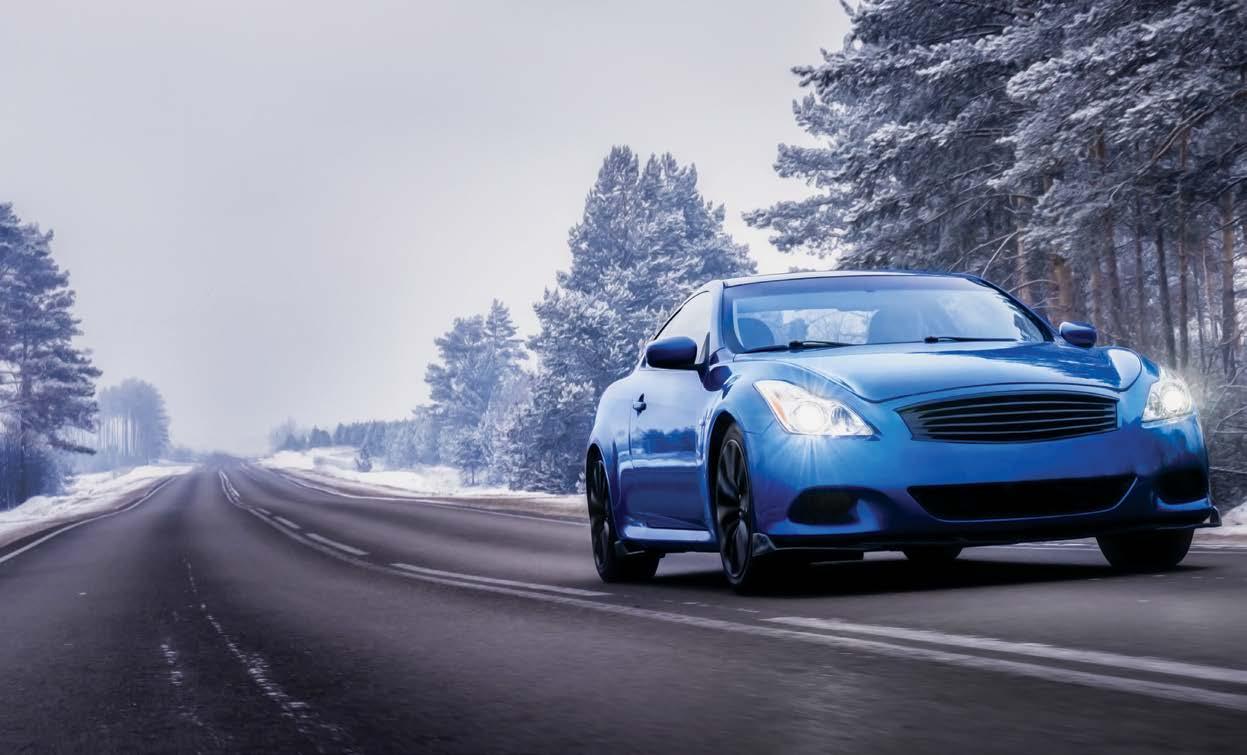

by Elizabeth Crumbly Autobody News
Mitch Dean has made a serious go of collision repair right alongside fatherhood, marriage and service to his community.
His shop, Dean’s Automotive, serves Cheraw, SC, and its surrounding population. There’s just one other shop in the area, and Dean, a quietly confident 58-year-old, said he doesn’t view the business as competition, but more as a source for collaboration
That idea tracks with the rest of his story and philosophies, which together paint a picture of how one private shop owner has built and sustained life in a small town and given back to his industry.
car he stood behind it. When he had a car built, nine times out of 10, he had it sold before he ever finished building it,” Mitch said. “When I started on my own, I wanted to, if possible, build on his reputation and build on that good name that he had spent so much time building himself.”
Mitch’s reputation, like his father’s, did grow. But as a professional, he sometimes felt thwarted and isolated. He attended the Masters School of Autobody Management, then located in California, but he found that trying to absorb the wealth of information was like “drinking from a fire hydrant.”
Attempts to implement the education eluded him, and years

Mitch’s father, Wayne Dean, made a name for himself rebuilding, showing and selling Ford trucks; Mitch was attending car shows and painting vehicles at a young age.
“He actually had me in the shop when I was about 11 and painting my first car by myself when I was about 14. I graduated high school, went off to college, graduated from the College of Charleston in ‘89, came back home, and my dad had never done any work for the public,” Mitch recalled to Autobody News.
He returned home with an English degree and an abandoned bid to become a dentist. He had gone so far as to take the Dental Admission Test.
“I was actually filling out the [dental school] application, and I was like, ‘I just can’t stomach four more years of this,’” he said.
So, collision work it’s been since the early 1990s.
From the beginning, Mitch knew his father had built a solid reputation on good work, and he thought he could base his own operations on that.
“Folks around the area knew his name and knew that when he built a
Technical College, and his own son, Jesse, works in the shop part time.
A steady pace that’s not blazing is fine by Mitch, and he conveys that to his employees.
“I’ve told my guys that we just come and work steady. I don’t want you coming in working like you’re putting out a fire,” he said. “We average about seven cars a week, and that’s fine by me.”
The work has made a lasting impression on customers, earning the shop a coveted A+ Better Business Bureau rating.
It’s been important for Mitch to leave room in his life for family and church, and that mentality has allowed him to be present for his pharmacist wife, Billie Dean, and their three children.
“From the very beginning I determined that I was going to try to be involved in my kids’ ball games, dancing, whatever it was,” he said.
And he was.
“My wife and I did double duty running to different ball fields and whatnot, but I determined a long time ago that Wednesdays I was closing at 5 p.m., regardless, to go get ready for church,” he said. “I just made that a commitment early on and stuck with it. And it’s never been a problem at all.”
A couple of years ago, the shop cut
back to four and a half days a week, too, closing at noon on Fridays for “a little bit more breathing room.”
Mitch advises shop owners at earlier stages in their careers not to take on an overwhelming amount of work. Building gradually, he said, is key to longevity.

When it comes to the longevity of his own business, he said he’s not opposed to an exit plan, but he’d like to see his shop grow.
“If I sell it one day, I’m hoping that whoever buys it will take it to another level or the next level, so to speak, and just build on it because I think there’s still a lot of upside in this industry,” he said.
passed. And isolation can be hard to overcome in a small town like Cheraw, population 5,000, where more metro areas are a couple of hours away.
But then, nearly a decade ago, he found the shop owners that now make up the Carolinas Collision Association, and he started gleaning knowledge from that group. Its members talked nuts and bolts on things like how to collect payment and communicating with insurance companies.
“They just kind of rekindled the fire and the passion in me for it, and I’ve learned more because of the networking with these guys — I’ve learned more in the past five years than I did the previous 25 years,” he said. “I was on an island the whole time before I met those guys.”
Mitch has made his living in a “blue collar kind of town” on everyday driving cars. At this point, he doesn’t advertise, and although he says he’s not high-production, he keeps a fourto six-week backlog of work.
He’s doing his part to bring along the next generation of technicians with two recent hires from Florence-Darlington

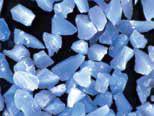

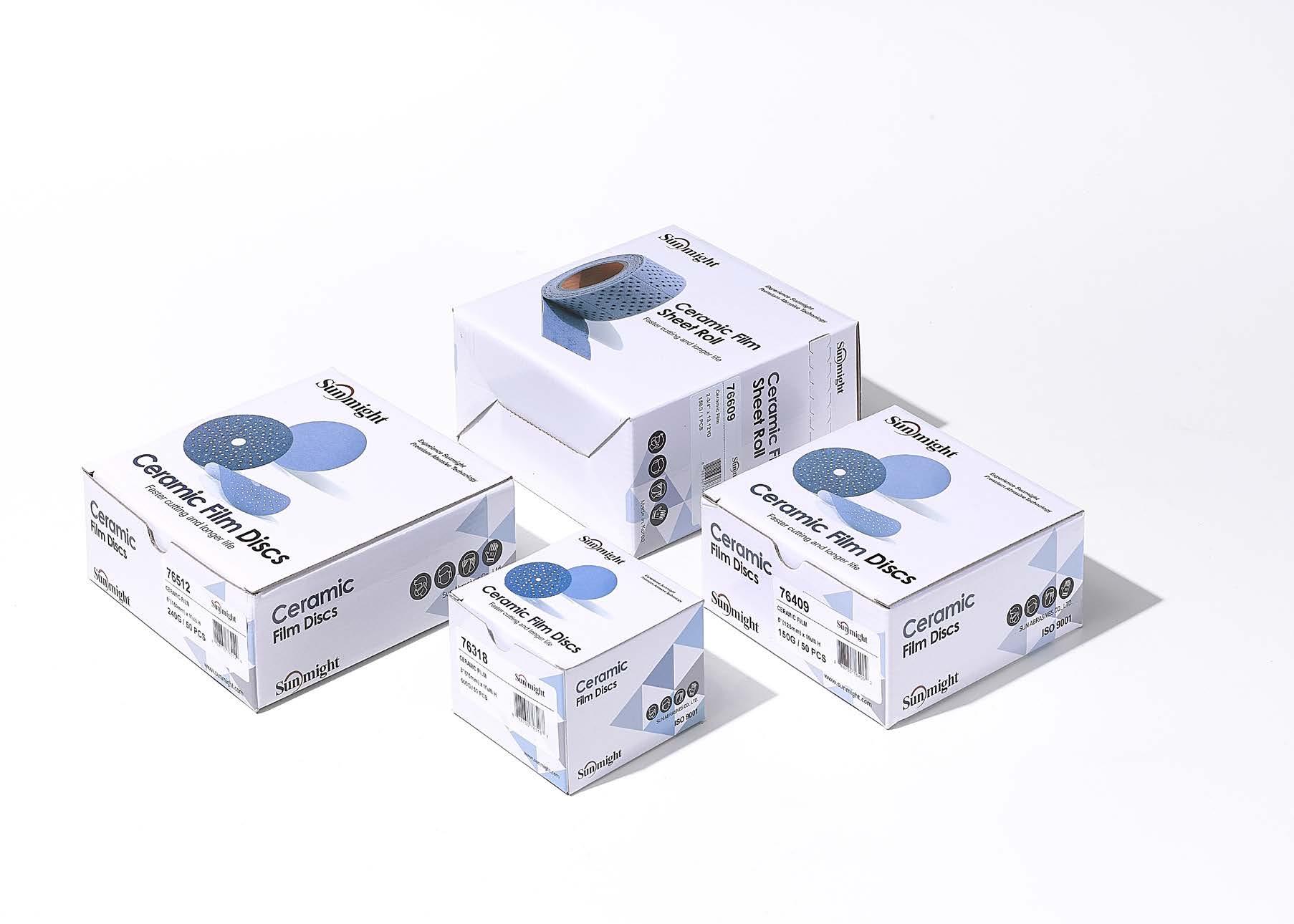


By Abby Andrews Autobody News
Porsche Cars North America, Inc. is celebrating the 25th anniversary of the Porsche Technology Apprenticeship Program (PTAP). Since 1999, the program has provided high-quality training and education to men and women interested in becoming a Porsche technician. By the end of this year, more than 1,000 students will have graduated from the program.
“Our technicians are the backbone of Porsche’s legacy of innovation and precision,” said Timo Resch, president and CEO of Porsche Cars North America. “We are incredibly proud to be celebrating 25 years of this unique and impactful apprentice program.”
Universal Technical Institute (UTI) offers PTAP training at Porsche’s training centers in Atlanta, GA — where it originated — as well as Easton, PA, and Eastvale, CA. The classes are limited to 12 students with one instructor. Porsche directly supports, equips and invests in the UTI PTAP program, allowing students to receive training on all of its vehicles,
tools and technologies, including the 911, Boxster, Panamera, Cayman and Cayenne.
The 23-week course covers everything from essential maintenance to advanced diagnostics. After graduation, PTAP helps technicians
also worked under the shop foreman as an apprentice while he was a student.
Fuller said he applied to PTAP because his dad had owned a couple Porsches, and he wanted to work on them. He also liked the exclusivity of the program.
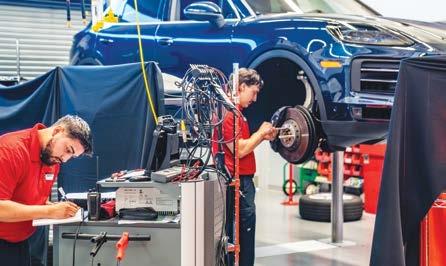
find full-time jobs at one of the 200plus Porsche Centers in the U.S. Most graduates are able to secure a wellpaying and stable start to their career in an industry with high demand.
Jarred Fuller has worked as a full-time technician at Porsche Service Center South Atlanta since he graduated from PTAP in 2021. He


more shop experience and to pass a test.
“I was interested in doing the most difficult thing,” Fuller said.
The training was mostly handson, other than some classroom instruction most mornings to learn about what they would be working on for the rest of the day.
“It builds understanding of cars in general and specifics with the Porsches a lot faster,” Fuller said. “It was a lot easier to grasp things at an accelerated pace than classroombased.”
PTAP graduates are eligible for bronze certification within a year of working full time — they only need

“Classes offered to [technicians pursuing bronze certification] aren’t every week; they may only be every three or six months or once a year, so it can take an extended amount of time to bring somebody up to speed,” explained Daniel Joffe, service director at Porsche Service Center South Atlanta. “Going to PTAP is accelerated. They’re getting every course Porsche would require to get bronze level.”
“I gained a three- to four-year advantage by going through PTAP compared to other dealer technicians who didn’t,” Fuller said. “I took the same amount of courses, but that jump has allowed me to progress through certifications at a higher rate.”
Joffe said several technicians working there are PTAP graduates. In fact, he prefers them.
“If I were given five applications and one was a PTAP student, I would give that one a higher priority because they have manufacturer-specific training,” Joffe said. “These are not easy cars to work on and everything is very expensive.”

By Abby Andrews Autobody News
Until recently, Walk Link was a division vice president for Gerber Collision & Glass, overseeing nearly 200 stores in the company’s West division.
Link joined Cole Strandberg, host of The Collision Vision podcast, driven by Autobody News, for the first episode of its new series, “Operational Excellence: Shop Strategies for Success.” Link talked about financial management and growth planning, as well as his newest professional pursuits — including an innovative new tool he thinks will help shops address their labor shortages.
After serving four years in the U.S. Navy, Link was looking to transition to civilian life. In 1997, he opened a collision repair center with a business partner. A few years later, Link sold his share of the business to his partner and then worked for different companies in the Atlanta area.
In 2019, he joined Gerber Collision & Glass, first as a regional vice president in Florida, then in Atlanta. In 2022, the company was restructured and Link was promoted to division vice president in the South. In November 2023, he moved to that same position in the West.
“It’s been a really good career for me,” Link said. “This business is a diamond in the rough.”
The overall health of a company is based on its bottom line, or earnings before income, taxes, depreciation and amortization (EBITDA.) “Topend revenue is for rookies,” Link said. “EBITDA is where the professionals play.
“I’m not trying to minimize what top-end revenue can do for you in your business,” Link said. “I’m just suggesting it’s how a person manages all the facets of their business that leads to higher EBITDA dollars.”
Link said there is a “sweet spot” where a shop’s indirect costs get to a point when top-end revenue starts ticking up, but getting there requires adding more employees to handle more vehicles.
In his experience, Link said, a shop doing around $275,000 in top-end revenue makes as much in EBITDA dollars as one doing $450,000.
“I can prove that all day long,
because you cannot stretch people out so thin, you’re going to start losing out on CSI,” Link said. “I’m not saying that you can’t grow organically and go from $275,000, but you do need to be prepared that your bottom line is not going to start actually seeing the rewards of that increase in top-end revenue until you get to that $475,000, even $500,000 mark. Then you’re going to start seeing a significant improvement in your EBITDA dollars.”
When creating a budget, Link said the aim is see organic growth year over year. The goal amount will vary from shop to shop, whether it’s 1% or 10%.
“Financial growth is not always about the top line,” Link said. “It is my humble opinion that bottom line growth is way more important.”
The bottom line — or EBITDA — shows the strength of the company’s leadership in managing its employees, and represents how much an owner can reinvest into the company.
Owners need to be aware of indirect costs, like overtime for employees who support the company’s sales but don’t directly contribute to them, like the general manager, production manager, estimators, CSRs, porters and parts coordinators.
“Managing their overtime can be an absolute EBITDA killer,” Link said. “Don’t get me wrong. There is good overtime, in every business. But how you manage that and those indirect costs most likely will be the difference between being EBITDA positive or negative.”
“Labor efficiency” is based on the number of hours a tech can turn compared to the number of hours they are on the clock. Link said as a shop general manager or owner, he likes his techs to be around 200% — meaning if they are on the clock for eight hours, they can flag 16.
A tech’s experience level affects how repairs are distributed, because that plays into their labor efficiency.
“You don’t want your most junior technician performing the most difficult repair that you have or vice versa, and that’s why we have categories, A tech, B tech,” Link said.
“Labor is by far the No. 1 place that can have the most significant impact on our gross profit, because it has the highest margin opportunity,” he added.
Parts are another important line item in a shop’s budget. Link said while it is important to build and maintain good relationships with vendors to ensure your shop
is getting the best discounts, sometimes it also pays off to shop around.
“People love to talk to the same [parts] people because they think they’re going to take care of them,” Link said. “I am not saying that they won’t take care of you if you ask them to give you a better discount, but I certainly would call around and just make sure, because the margins on parts keeps lessening and you need every dollar you can get.”
Parts coordinators also need a tight system for following up on parts credits.
Shops need to make sure they’re charging for everything they do to restore a vehicle to pre-accident condition, Link said.
“I’m not talking about inflating repair costs just to make a profit,” he said. “But you do need to make sure that your team is educated on what our insurance partners allow us to charge for. That changes all the time, due to the ever changing ways that vehicles are being repaired.”
Just adding stores for the sake of upping your store count isn’t a healthy strategy, Link said.
Location is important, which includes making sure the market can support another collision repair shop. Look at population growth projections for the next several years. Having the right team before expanding is also key.
“I would say there can come a point where you may lose focus on whether growth is just going to be a win for your owners or your shareholders, or whether it’s just going to be a win for your employees’ bonus structure,” Link said. “I’m not suggesting that financial responsibility gets negated when people look at growth. But you gotta have discipline.”
Company leaders should keep up with professional development and keep an eye on industry trends, like the impact of OEMs’ new production methods on being able to repair them after a collision, which can require new tools and training for techs.
Link said there is strength in numbers — a larger group of repair shops can have a more influential relationship with insurance companies on how repairs should be performed and what they should be paid for.
“I personally believe private equity has a has a huge role in what we do,”
Link said. He said in addition to the big five consolidators in the U.S., another segment should grow: “Maybe 20 or even 30 more private equity companies that get 100, 150 stores,” Link said. “I think there would be some strength there. And again, I am not suggesting that it’s us against the insurance companies. It’s absolutely not. We need to figure out a way to be partners.”
Link said the top trend in collision repair is work in progress (WIP) levels.
“I think that the biggest trend that anybody needs to accept is that we are going to go down to 2019 claim counts,” Link said.
“We’ve spent the past three years enjoying the highest level of claim counts and WIP levels that we’ve ever seen in this industry, and for whatever reason, people are hitting the panic button now,” Link said. “And I understand why. We’re just now getting back to pre-pandemic levels of work.”
As ADAS evolves to prevent more collisions, it will also contribute to a degradation of claim count.
“But don’t forget the severity of claims has gone up tremendously,” Link said, as parts prices have increased and ADAS needs to be recalibrated.
The Tech Shortage — Maybe Not?
“Maybe we really don’t have a tech shortage,” Link said. “Maybe we are just not utilizing the techs that we have the most efficient way.”
Link said he is developing a “tech share” product, called Bolt, that will allow a shop to bring in a body technician, paint technician or estimator to work during their downtime at another shop.
“What if there was a system that could utilize all that downtime that we all know technicians have and that they are going to have here moving forward, with the claim counts going down? What if there was an app or a website where you could utilize that as tech share?
Think about the savings in terms of benefits, in terms of payroll taxes, all of those things.”
Link said he is introducing Bolt to the industry at the 2024 SEMA Show in Las Vegas. People can visit bolt.com to see what’s coming when the product launches in November.
“I’m going to show everybody how tech share is going to revolutionize our industry,” Link said. “It’s the gig industry,” he said, comparing it to Uber.
We kind of developed a customer base. Those people started having claims,” he told Autobody News. “They’d come back. I was like a body shop.”
Dalton quickly moved from something “like” a body shop to an actual collision repair business, and he was doing insurance-funded work a couple of years later. He opened Dalton Collision’s original location, which is still thriving today, in Blaine, TN.
His total operations have grown from an original 1,600 square feet in one location to 37,000, spread over two shops now, with an anticipated extra 6,000 square feet coming soon.
Dalton started seeing a change in body repair in the early 1990s as car manufacturers added airbags and safety became a central focus.
Direct repair relationships with insurance companies started to factor in to the work the shop was doing. Dalton was hesitant at first, but DRP work took hold, and the dealership referrals multiplied too.
Growth has moved, over the years, from organic to more intentional: In 2018, Dalton Collision in the Knoxville/Powell area opened, its corporate-headquarters appearance giving it a sleek appeal from the road. The decision was born from the evident success of the original location, backed by customer requests and market research on the new area.
“We got about as big as we possibly could with the market revenue we were really capturing,” Dalton said of the Blaine location, which sits about 30 minutes outside Knoxville, Tennessee’s third most populous city. “We kind of plateaued out there. I had a really good base with customers in the Knoxville region and surrounding counties. A lot of people, when they had car wrecks, they would drive to us, even
though they’d be a long ways off.”
Customers kept telling Dalton they wished he’d open in Knoxville. He began thinking about how to grow, looking at existing shops and running numbers on new construction. Finally, the perfect location became available. It was an existing building — 24,000 square feet — and Dalton had the option of a 20-year lease with a first-right-ofrefusal purchase option.
kind of opened back up, and it was really good from July going forward,” Dalton recalled.
Cars were rolling in, but the shop, like anywhere else, couldn’t get parts, so business backed up. Nevertheless, Dalton Collision kept all its employees, subsidizing their pay with federal Employee Retention Credits.
The staff used the downtime to complete trainings.

Through research, he’d found annual revenue for collision work for the area was ample, and there were fewer than 10 shops serving it. He took the plunge.
“It was a good market to be in, and we started it,” he said.
The customers and the manufacturer certifications multiplied, and then, a couple of years in, the pandemic hit. Like most businesses, Dalton Collision had to recalibrate as it faced the complications. There was an initial slowdown, but customers came back in relatively quickly due to the state’s comparatively quick approach to opening up again.
“We started feeling the hit in April [2020.] May was the worst month. June was really bad. But, fortunately for us, in July, the State of Tennessee

manufacturer certifications. Some of the paint companies had some parts training, blueprinting.”
At this point, now that inventory levels have gotten closer to normal across the industry, both shops are running at full capacity, and the Knoxville location, which Dalton purchased in 2021, will expand by 6,000 square feet soon to include a calibration center. The shops’ numerous manufacturer certifications — more than 17 OEM certifications now with some in process — are gearing more and more toward the burgeoning electric vehicle market, Dalton said.
It’s a far cry from buying and selling smashed-up Hondas. Over the years, word of mouth and repeat customers have been the business’ biggest growth driver. Respectful interactions, working well with different insurance companies and getting cars back on the road as soon as possible have gone a long way in establishing return customers.
“We did any kind of online training that we could do,” Dalton said. “We kept up our I-CAR training. We got
“We learned early on, you know, no matter whose car you’re repairing, no matter who’s paying the bill, be respectful, be nice, be polite,” Dalton said. “It seems like that goes a lot longer way than just ‘pay me.’”




SATA GmbH, Kornwestheim-based specialists for wet coating technologies recently introduced a new lineup of products at Automechanika in Germany.
The new product that attracted the most interest was the jet X premium spray gun. And rightly so: even at first glance, you can see that it has a new look: what stands out is the simple, elegant exterior in matt black with red accents.
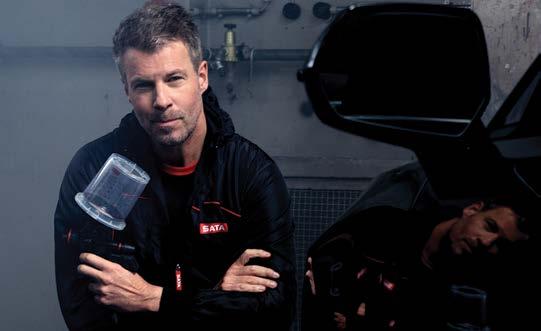
It is safe to assume that the jet X will create interest in the industry. According to SATA, the most important innovations are of a technical nature. An innovative nozzle technology is intended to set new standards in atomization: The labyrinth system invented by SATA guides the air in the nozzle so that it exits free of turbulence and pulsation. This ensures that the material is atomized extremely fine and homogeneously. The spray pattern is said to be particularly easy to control with optimized material distribution and clearly defined fade-out zones.
The jet X also has several other clever features, such as a trigger that can be removed in no time at all and without tools, with an integrated wrench for the fluid tip. The jet X is ergonomic and lighter weight than ever before. And with fewer components the maintenance is quick and easy.
There will be four options to choose from to fit your needs. Initially the jet X Basic and jet X Digital Ready will be available in the US in October, with the jet X Digital and jet X Digital Pro coming later pending approvals.
The jet X nozzles are available in two fan shapes: The “I” or “Control” nozzles produce a longer spray pattern with an even material distribution. They have a slower application speed but offer maximum control. The “O” or the “Speed” nozzles have an oval fan shape with a larger fade-out zone and a wetter core, which results in a higher application speed. This means ever painter can choose the nozzle system that suits their own preferences and application technique.
Regardless of which nozzle type is selected, the respective fan dimension remains constant across the different nozzle sizes. Only the material output changes linearly with the size.

The second major innovation with the SATA logo was perhaps not as eagerly awaited - but it is equally exciting: LCS, the Liner Cup System from SATA. Although it is by no means the first on the market, it has a decisive advantage: It fits all SATA spray guns with a QCC cup connection - and without an adapter. This improves the weight and center of gravity of the gun and makes cleaning easier. Other product benefits include high-quality materials, particle-free screens that click into place. A quadruple bayonet lock on the lid, which shows at-a-glance that it is closed correctly. A complete and detailed scaling system in addition to an upside-down scale showing the remaining quantity during painting.
Creating an initial estimate quickly frees up time that can be spent researching the OEM procedures for that job.
“There’s a lot of time wasted trying to get the basics on the [initial estimate], which could be better spent trying to dig deeper into those repair instructions,” Batenhorst said.
Michael Bradshaw of K&M Collision in Hickory, NC, agrees the Mobile Jumpstart app creates only an initial estimate, not the full repair plan needed once a job comes into the shop. But he’s using it to quickly identify potential total losses or when a customer comes in for an initial drivable estimate.
“We really don’t like to do those because we feel like it’s an enormous waste of time,” Bradshaw said. “And it’s not accurate because the OE research and the scans that have to take place, and all the additional damage that’s going to be uncovered once the vehicle is disassembled.
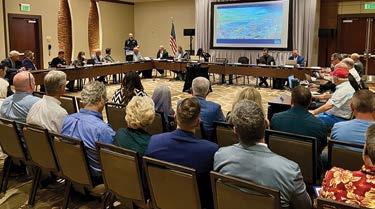
He said the automated initial estimate also can be run through the Society of Collision Repair Specialists’ (SCRS) Blueprint Optimization Tool (BOT), which can quickly audit estimates looking for missed operations or line items.
So we’re kind of training our [customer service representatives] to explain to customers, ‘We’re going to do an AIgenerated estimate that is extremely preliminary for you to get your claim process started,’ and then explain the process as far as a repair appointment, a disassembly, and a repair plan that’ll actually determine a proper cost of repair.”
The app also is an easy way early in the process to triage vehicles based on the level of damage, he said.
Batenhorst said his shop has also used Mobile Jumpstart when checking in a customer vehicle to quickly quote for repair of unrelated damage. As a dealership-owned shop, he also has a junior estimator at the dealership’s service drive using the app to provide initial collision repair quotes to those customers as well.
“I think it’s really easy for us
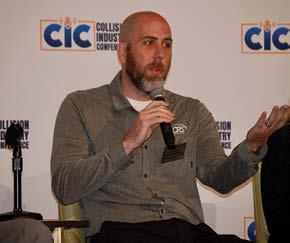
as an industry to shy away from technology because we don’t understand it or because we shy away from change,” Bradshaw said. “But this is something that anyone can use, and it’s going to save 15
or 20 minutes at the onset of each file, and a lot more time in situations when it identifies a total before you get more involved with that.”
He said it’s important to get the correct settings within your CCC profile to ensure Mobile Jumpstart works well. “But if you’re a CCC user, you already have this capability and functionality,” he said. “This is not an additional add-on module or anything.”
Bradshaw and Batenhorst, who both are on the SCRS Board of Directors, demonstrated the Mobile Jumpstart product during a recent association meeting. SCRS Executive Director Aaron Schulenburg said the presentation wasn’t meant to promote any particular product since there are other similar tools.
“But I think there’s a lot of resistance to things like AI, and as some of our board members started to utilize these resources in their business, [we wanted to] help people think about ways it can be an advantage,” Schulenburg said. “Being a repair planner is a difficult job. Can we make their life a little bit easier to let them focus on the things that are becoming more

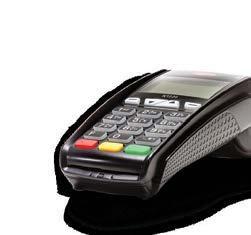


critical in their role rather than some of the more routine functions that could be replaced through some automation?”
“I think it’s really easy for us as an industry to shy away from technology because we don’t understand it or because we shy away from change.”
MICHAEL BRADSHAW K&M COLLISION
Amberson sees such estimating tools as only one of the opportunities for increased automation in the industry. He said about 15 years ago, he sent a painter at the company he was with then to get an update on a virtual painting product the University of Minnesota was working on.
“He came back and said, ‘One day I may be wearing a tie like you are while doing my job,’” Amberson said. “And I thought, he’s right, that could happen. We’re at a point now I’m almost thinking: why hasn’t it happened? Why can’t we use robots in there, while maybe he’s sitting at some control, and [the process] is environmentally safer,
cleaner, potentially more efficient? What is it going to take before we can get there, that we can automate refinishing?”
He said he’s seen some products that automate some basic welding.
“How far away are we from automating those sorts of things in the shop? I don’t think we’re anywhere near where we could be,” Amberson said.
He said automakers currently send auditors into certified shops to verify work is being done according to factory repair procedures.
“But there’s technology out there right now that can put sensors into welders and other devices that can verify and report information without a human presence,” he said. “I’d like to think one day we’re going to get there.”
He believes shops aren’t doing as much measuring of vehicles as they should be, and that, too, offers an opportunity for more automation to make the process easier and faster.
“There are just so many things that could be happening and we’re not quite there yet,” he said.
Autel has released Guided ADAS, an application that enables Autel Calibration system owners to use their frame, targets and expedited setup, with OE software accessed in-house or via the Autel Remote Expert platform to calibrate vehicles not yet covered by Autel tablet ADAS calibration software.
Autel depends on automakers to make the latest model diagnostic, servicing and calibration software and specifications available. This creates a lag time for the newest vehicle coverage to reach Autel tablets. To address this and provide technicians with a comprehensive, all-in-one solution, Autel developed Guided ADAS.
Guided ADAS, which is compatible with all of the Autel calibration systems: the Standard, MA600, IA800, IA900 or the new IA700 frames, allows shops to use their own OE subscriptions and tools or contract with a Remote Expert with OE software subscriptions for the setup specifications and to initiate ADAS calibration on new vehicles.
Link said he is also talking to a private equity firm about investing in acquiring some collision shops and building more, so he can operate them the way he sees fit.
“I can’t tell you how excited I am about that,” Link said. “I got to do it once when I came right out of the Navy, and it has been a goal for me to get back to that point.”
Claims counts and WIP are going down, and with them, top-end revenue. Evaluate the impact it’s having on your business and consider offers from consolidators, private equity groups or other independent owners looking to acquire your shop.
“This is not a scare tactic. This is just real talk here,” Link said. “This is probably a pivotal point in whether or not you want to sell now or wait. And I would say that every month that goes by, it is going to have a negative impact on the valuation because of how we, as consolidators, look at evaluating that business.”



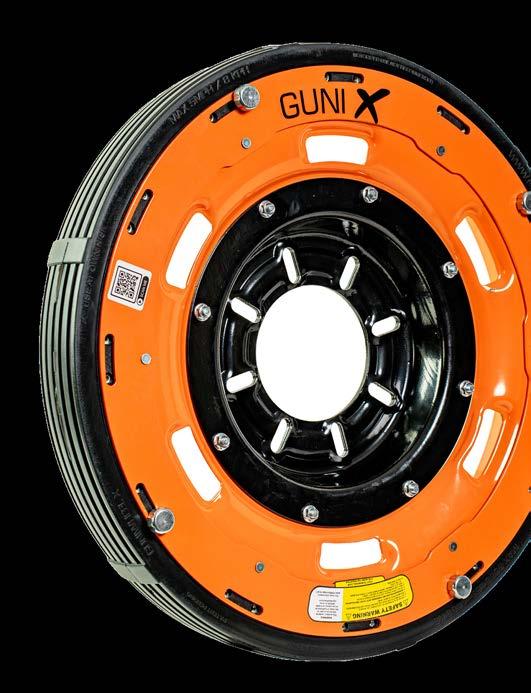
By Leona Scott Autobody News
Staying competitive in collision repair means adapting to industry trends that improve workflow efficiency and customer satisfaction while reducing costs. One growing trend is bringing glass operations in-house, a move that collision repair shops find beneficial for multiple reasons.
With insurance companies limiting what they’ll cover, downtime impacting profitability, and the control over quality becoming a critical issue, it’s no wonder body shops are taking matters into their own hands.
In this article, we’ll explore five key reasons body shops are opting to bring their glass operations in-house, featuring insights from industry experts like Shauna Davis, president of Kaizen Glass Solutions in Hutto, TX; Lupe Gonzalez, owner of C and S Body Shop in Buda, TX; and Carlos Manzo, owner of U First Auto Body Shop LLC in Austin, TX.
One of the biggest frustrations for collision shops relying on third-party vendors for glass replacement and repair is the delay in service. These delays increase the overall cycle time of a job and negatively impact customer satisfaction. Gonzalez experienced this firsthand at his shop.
“We’d have a vehicle in the shop for 15 days, and when we needed a glass vendor to come in, we’d have to wait two to three days just for them to remove the glass, then another two or three days for them to reinstall it,” Gonzalez explained. “This meant a five- to six-day delay in completing jobs, and all that downtime was hurting our business.”
By bringing glass operations inhouse, Gonzalez was able to eliminate this bottleneck and speed up repairs. “Within the first few days of doing glass replacements in-house [after our training], we were able to do five jobs right away, saving us both time and money,” he said.
Manzo brought glass operations inhouse to improve his shop’s cycle times and enhance quality control. “Before we made the switch, it could take up to a month or more to get a vehicle back to the customer because of delays with the glass vendor. Our turnaround time is two weeks since we handle it inhouse,” Manzo said.
“That’s why we would have many delays…having to wait on multiple vendors and, on top of it, finding out it didn’t pass the scan because more things were wrong with the vehicle. This
would constantly cost us in time going back and forth. Now, having everything in-house assures us we know everything in real-time,” said Manzo.
Another pain point for body shops is relying on sublets. When a thirdparty glass vendor breaks something during the installation, the body shop often absorbs the cost, said Gonzalez. Plus, insurance companies
By training their technicians to handle glass repairs, body shops can ensure the work is done to their exact specifications, avoiding costly issues down the line.
The financial upside of bringing glass operations in-house is hard to ignore. While there’s an initial investment in equipment and training, the return on investment (ROI) can be realized quickly. For example, the cost of auto glass training through companies like Kaizen Glass Solutions is relatively low, starting at $1,895 for basic auto glass training and $3,500 for both auto glass and ADAS calibration training. In addition, specialized toolkits for glass repairs

let’s say you make an average of $300 per job. After factoring in reduced cycle times, lower labor costs and eliminating sublet fees by keeping the work inhouse, the savings add up fast.
5.
Bringing glass services in-house benefits the shop financially and improves the customer experience. Today’s consumers value convenience, and offering a onestop solution for collision repair and glass replacement fosters loyalty. Customers who don’t have to visit multiple locations or wait for thirdparty vendors to complete their repairs are likelier to return and recommend the shop to others.
For many collision repair shops, bringing glass operations in-house is a no-brainer. Not only does it reduce cycle times, avoid unnecessary costs, and increase profitability, it also ensures better quality control and enhances the

Unlock savings and precision fit with genuine parts

• Save time and money: reduce returns by up to 16%
• Faster ordering process
• More accurate orders
• Easier invoice processing
• Live information
• Seamless fit
• Competitive pricing
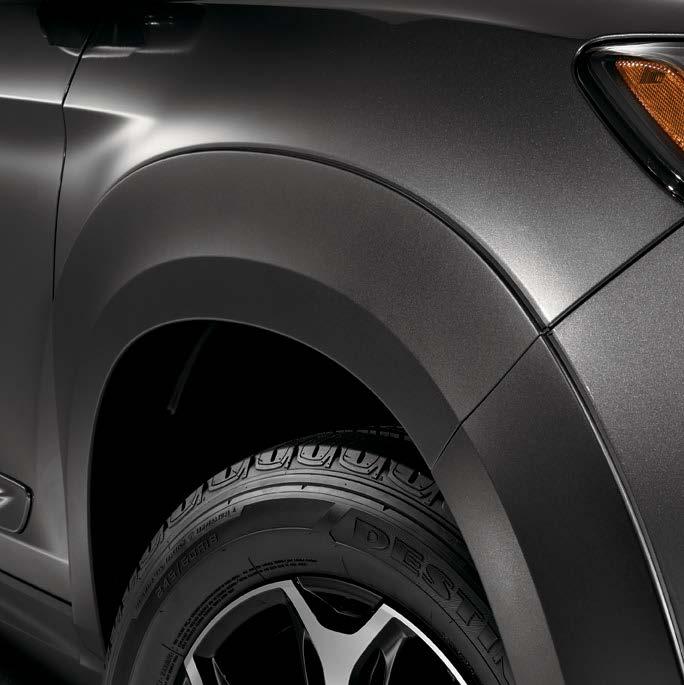
Carlock Honda
Birmingham
800-987-0819
205-949-5457
Dept Hours: M-F 8-6 robert thompson@carlockcars com
AutoNation Honda
Clearwater
Clearwater
888-205-2564
727-530-1173
Dept Hours: M-F 7-7; Sat 8-5; Sun 10-3 santosr1@autonation com
AutoNation Honda
Hollywood
Hollywood
800-542-8121
954-964-8300
Dept Hours: M-F 7-7; Sat 7-5; Sun 9-5 hernandeze@autonation�com
Classic Honda
Orlando
888-893-4984
407-521-1115
Dept Hours: M-F 7-7; Sat 8-4 parts@classichonda com
Headquarter Honda
Clermont
800-497-2294
407-395-7374
Dept Hours: M-F 8-7; Sat 8-5 pepe guevara@headquarterhonda com
Acura of Orange Park
Jacksonville
888-941-7278
904-777-1008
Dept� Hours: M-F 7-8; Sat 7-5; Sun 9-3 msweeney@acuraoforangepark com
Duval Acura
Jacksonville
800-352-2872
904-725-1149
Dept Hours: M-F 7-7; Sat 8-5 Cecil adams@duvalacura com
Hendrick Honda Pompano Beach
Pompano Beach
954-425-8244
Dept Hours: M-Fri 7-6; Sat 7-5; gerardbruno@hendrickauto com
Holler Honda
Orlando
407-442-1938
Dept Hours: M-F 7-6; Sat 7-4 parts@hollerhonda com
Honda of South Miami
Miami
305-256-2240
Dept Hours: M-F 8-6 mfranceschi@hondaofsouthmiami com
Rick Case Honda Davie
877-544-2249
Dept Hours: M-F 7-7; Sat 7:30-4 robbutton@rickcase com
Ed Voyles Honda
Marietta
800-334-3719
770-933-5870 Direct
Dept Hours: M-F 7-7; Sat 7-6 hondaparts@edvoyles com
Gerald Jones Honda
Augusta
800-733-2210
706-228-7040
Dept Hours: M-F 7:30-6; Sat 8-5 tdunn@geraldjoneshonda com
Rick Case Acura Fort Lauderdale 800-876-1150
954-377-7688
Dept Hours: M-F 7:30-6; Sat 8-5 rubenramos@rickcase com
Jackson Acura Roswell
877-622-2871
678-259-9500
Dept Hours: M-F 7-6; Sat 7:30-6 kmcmillan@jacksonacura com
Honda Mall of Georgia
Buford/Gwinnett
678-318-3155
Dept Hours: M-F 7-7; Sat 7-5 cdunlap@penskeautomotive com
Milton Martin Honda
Gainesville
770-534-0086
678-989-5473
Dept Hours: M-F 7:30-6 robertthomas@mmhonda com
Honda of Newnan
Newnan
678-423-8183
Dept Hours: M-F 7-6; Sat 7-4 samuel trapani@henrickauto com
Nalley Honda Union City 866-362-8034
770-306-4646
Dept Hours: M-F 7:30-7; Sat 8-5 hondawp@nalleycars com
Patty Peck Honda
Ridgeland
800-748-8676
601-957-3400
800-476-9411
828-684-4400
Dept Hours: M-F 8-5; Sat 8-4 appletreeparts@hotmail com
McKenney-Salinas Honda Gastonia
888-703-7109
704-824-8844 x 624
Dept Hours: M-F 7:30-5:30 parts@mshonda com
Vann York Automall
High Point
336-841-6200
Dept Hours: M-F 7:30-6; Sat 8-3
Fred
864-234-6481
Dept Hours: M-F 7:30-6; Sat 8-5 hgrparts@anderson-auto net
Piedmont Honda
800-849-5057
864-375-2082
Dept Hours: M-F 7:30-6; Sat 8-5 pmartin@pattypeckhonda com Apple Tree Honda Asheville
Dept Hours: M-F 7:30-6; Sat 8-5 swhite@piedmontcars com
Nalley Acura Marietta 800-899-7278 770-422-3138
Dept Hours: M-F 7-7; Sat 7-5 byoung@nalleycars com
Dept Hours: M-F 7:30-6; Sat 8-1 www flowacura com
Karen Radley Acura Woodbridge
800-355-2818
703-550-0205
Dept Hours: M-F 7:30-5:30; Sat 8-3 coreythompson@radleyautogroup com
Airport Honda Alcoa
800-264-4721
865-970-7792
Dept Hours: M-F 7:30-6:30; Sat 7:30-5 parts@airporthonda com
AutoNation Honda
West Knoxville Knoxville
800-824-1301
865-218-5461
Dept Hours: M-F 7:30-6 rossd1@autonation com
Wolfchase Honda Bartlett
800-982-7290
901-255-3780
Dept Hours: M-F 7-7 ekerr@wolfchasehonda com
Checkered Flag Honda
Norfolk
800-277-2122
757-687-3453
Dept Hours: M-Sat 7:30-6 honda checkeredflag com
Hall Honda
Virginia Beach
800-482-9606
757-431-4329
Dept Hours: M-F 8-7; Sat 8-5 fox@hallauto com
Valley Honda
Staunton
800-277-0598
540-213-9016
Dept Hours: M-F 7:30-5:30; Sat 9-5 bwimer@myvalleyhonda com
West Broad Honda
Richmond
800-446-0160
804-672-8811
Dept Hours: M-Fri 7:30-6:30; Sat 8-5 wbhonda@aol com
by Abby Andrews Autobody News
John Yoswick is a longtime writer for Autobody News and editor of the weekly CRASH Network newsletter, which conducts regular surveys of collision repair shops to find out how their business — and relationships with insurers in particular — are faring. He recently helped kick off “Insurance Talk: Navigating Insurance and Repairs,” the latest series on The Collision Vision podcast, hosted by Cole Strandberg and driven by Autobody News, by giving an overview of the current state of insurance in collision repair, as well as emerging trends.
DRPs: An Evolving Relationship
Yoswick said when he started covering the collision repair industry in the late 1980s, only a couple insurance companies had direct repair programs (DRPs) established. The concept caught fire in the 1990s, reshaping shop and insurer relations. The first DRPs were very different from what they look like today. “The pricing and other concessions that insurers initially asked for were pretty limited, and so it appealed to those who were tired of having to fight over
each claim and who were looking to speed up the process, while also getting a more steady supply of work,” Yoswick said.
Still, there were people in the collision repair industry who predicted DRP agreements “would likely become less of a partnership in the decades that followed,” Yoswick said. “And many shops do feel that the benefits of DRPs have become much more one-sided.
“I think that’s part of what’s led to
as insurers tried to reduce their own costs by insisting on more non-OEM parts or considering distribution partnerships to buy parts or paint directly.
“Shops really pushed back on those things,” he said. “I think that even those not around for some of those past times are seeing, even if they don’t realize it, how the relationship between shops and insurers has been shaped by those turning points 1,000%.”
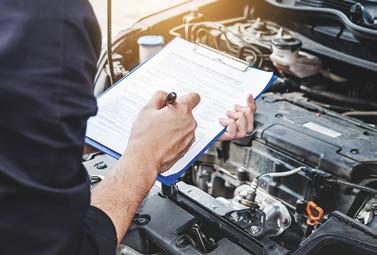
more friction between shops and insurers, and less interest on the part of some shops to continue in those relationships,” he added.
The rise of DRPs brought more points of contention, Yoswick said,
Advancing Vehicle Tech’s Effect on Insurer-Repairer Relationships
Yoswick said before he started covering the industry, manufacturers’ turn to unibody construction in the 1970s and ‘80s had a dramatic effect on repairs and, with it, how shops and insurers worked together – so much so, it led to the formation of I-CAR.
“Shops and insurers jointly recognized the importance of getting the industry trained to repair unibody vehicles correctly,” he said.
More recently, Advanced Driver Assistance Systems (ADAS) and the scans and calibrations necessary





to repair them correctly have had a similar effect.
“The realization about the need for scanning a significant percentage of vehicles seemed to happen pretty rapidly, and that rapid change led to a lot of push back from insurers, and everybody scrambling to get their arms around what this technology required,” Yoswick said. “It adds to the repair process and repair costs.”
Since 2017, Yoswick said CRASH Network’s shop surveys have measured how long shops say they have to wait for a response from an insurer about supplement approvals.
“Back then, the bulk of those reviews were in-shop re-inspections,” Yoswick said. “And that has shifted, as everybody knows, most dramatically starting during the pandemic, to what we initially were calling desk reviews and are now more often called remote reviews.”
The wait times for these reviews have increased from two to three days in 2017 to almost five days on average – “a full workweek for a supplement review, and the wait times vary quite a bit from one insurer to another,” Yoswick said.



















Three of the larger insurers reportedly are taking seven days or more to review supplement approvals, he said.
The wait time has a trickle-down effect on shops’ productivity and backlogs of work, as well as how long a customer has to rent a car while theirs is in the shop. That all has a negative effect on customer satisfaction and their loyalty to both shops and insurers.
“There’s just so much waste and cost related to this for both sides that I’m sort of baffled why there’s not more joint efforts by shops and insurers to combat it,” Yoswick said.
Strandberg asked how DRP agreements affect how a shop operates.
“So many ways,” Yoswick said –everything from the parts vendors and estimating software a shop uses, the makes of vehicles it can fix, how it markets itself and even how it pays its employees can be affected by a DRP.
However, Yoswick pointed out, what may be an untenable DRP for one shop might work very well for another. One multi-shop owner told Yoswick he doesn’t work with a particular insurer because he found them too difficult, but he knows another multi-shop owner who has a location that does almost nothing
but DRP work for that same insurer.
Insurers seem focused on trying to establish consistency in what procedures they will pay for related to ADAS scans and calibrations right now, Yoswick said, as everyone in the industry recognizes the liability they face if they don’t follow OEM repair procedures.
“I’m hoping there’s not too many people listening right now who aren’t aware of the John Eagle case,” Yoswick said.
Post-collision OEM repair procedures can call for “pretty intrusive stuff,” Yoswick said, like measuring steering columns and replacing seat belts, but some shops are reporting significant pushback from insurers.
Insurers are trying to establish uniform wording on estimates and invoices to make data analysis easier.
“One of the keys to building that consistency is everybody calling things by the same name,” Yoswick said. “I think [insurers are] going to increasingly push back on generic invoices that just say something like ‘calibrate vehicle’ rather than giving specific detail, and I think they’re increasingly going to want more documentation on exactly what was done and what’s being charged for.”
Yoswick said he thinks the consistency could “come fairly quickly,”
as some service providers and insurers are starting to work on agreements, but he didn’t want to speculate on how repair costs might come down as it is established.
Labor rates are always another point of contention, Yoswick said, as his surveys find a steady rise in the number of shops charging customers beyond their deductible to cover costs the insurer won’t. “It can be pretty easy to explain to a customer, your insurer will only pay X dollars per labor hour and our labor rate is X plus two, so we need to charge you $2 for each of the 30 labor hours on this job,” he said.
When considering a DRP, shop owners should establish what percentage of their business they want to come from any one particular source. They should also consider the type of vehicles their shop tends to repair and their market demographics, as well as their staff’s skillsets. “Try to find the ones that have the best fit,” Yoswick said.
“We’ve definitely seen some indication of shops moving away from DRPs and focusing more on OEM certifications,” Yoswick said.
Of about 550 shops that responded to a CRASH Network survey in March, Yoswick said, about one-third said they had no DRPs for the past year or more,
which was consistent with prior years’ surveys.
But of the 365 or so shops that did have at least one DRP, about 22% reported having fewer DRPs than the year before.
“Combined, those 365 shops had just under 1,300 total DRPs, but that was 84 fewer DRPs than that same group of shops said they’d had a year earlier,” Yoswick said. “That’s a that’s a pretty big shift.
“We also track how much backlog of work shops have, how their total sales and car counts are changing over time and across the board,” Yoswick said. “Those things were high and rising in 2021, 2022 and most of 2023. So if you’ve got more work than you can get to, it’s pretty much a no brainer that maybe you don’t need all that discounted DRP work.”
Yoswick said he thinks, right now at least, shops see more potential benefits going after OEM certifications instead.
“I think what will be interesting to watch, as we see shops’ backlogs and work in process and claims counts starting to get back closer to prepandemic normal, is whether that trend of moving away from DRPs stabilizes or even reverses itself, and I’m not sure I have a prediction on that. I think it’s too early in that trend,” he said. •
•
•




Insurers have offered rate increases to shops to keep them in their DRPs, Yoswick said, which he had never seen before. Insurers are also more willing now to negotiate some elements of the agreements.
Yoswick said some large MSOs have already shifted to performance-based agreements with some insurers.
“They say, ‘Our average severity for this coming period will be X number of dollars.’ And then money changes hands between the two at the end of that period, depending on whether severity ended up higher or lower than what was agreed to,” Yoswick said.
As consolidation leads to more MSOs reaching that growth level, Yoswick said he expects to see those types of agreements increase.
He also thinks shops and insurers will use technology to speed up the claims process.
“I don’t know what that will look like, but there’s just too much inefficiency in the current processes for the status quo to continue,” Yoswick said.
He said AI will probably play into that, by using historical data to get enough of an idea of what kind of damage a vehicle sustained in a






particular type of collision to write an initial estimate.
“Get outside the four walls of your shop,” Yoswick said. “You’ve likely got great people within your shop. They’re seeing things from within those same four walls just as you are. You need outside input from other shop owners, for example.
“Find a consultant who understands your business model and has a proven track record of helping others succeed, or get active in an association or join a 20 Group. Get outside input from podcasts like this and publications like Autobody News.
“Attend industry conferences and events to gather input, not just from the speakers and the presentations, but from interacting with the other attendees.
“Because, frankly, the most successful people I know in this industry, no matter how you choose to measure success, are people who can and do point to a multitude of ways that they’ve learned from others and then put that to use in their business,” Yoswick concluded. “I think that’s true about navigating the insurance industry landscape or almost any other aspect about managing a collision repair business.”
























































































































































































































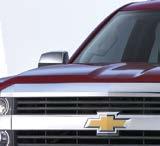









































































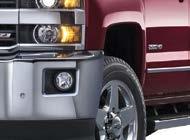


































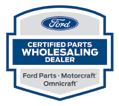







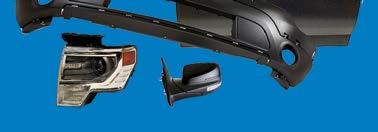





“We’re keeping it kind of centrally located. We want as many vendors and shops to participate as possible. The whole purpose of the kickoff is to let people know who we are, what we’re about — get people excited about the association itself. Think of it as like an open house for the association,” Serrano said. “We want to make sure we’re offering something of value.”
That value includes looking at ways to weather and even thrive as the way cars are made shifts.
“We’ve had a lot of things change and a lot of challenges as an industry on multiple fronts from parts suppliers changing the way they manage their supply chains to price fluctuations and paint availability,” Serrano noted.
The fact that vehicles are becoming more complex with more features is exciting though, he said, and collision repair professionals need to be on top of new procedures and technology that will come with the continued electric vehicle boom alongside vehicles that have higher levels of autonomy.
Meanwhile, shops still have to keep up with customer service trends.

“It’s our job as an industry to take care of people. You know, they usually see us on their worst days — they got in an accident,” Serrano said. “It’s a scary event for them. It’s new. And while we deal with this every day, it’s still very much our responsibility to handle that in the most responsible way. The decisions we make a
difference to people’s lives.”
There’s been initial participation from across the state as FABA prepares to officially launch. Serrano mentioned a smaller association that existed a few years ago in North Florida as an inspiration for a statewide iteration. FABA will be the first effort since then, he said.
Other officers include President Drew Bryant, Treasurer Aaron King, Secretary Tarin Ocasio and Coary, who is also serving as executive director of this association, in addition to OKABA.
Education will be a main focus for the fledgling association, said Serrano, who himself helps run a Jacksonville-area family owned shop, Serrano Paint & Body Shop There will be, at minimum, an annual gathering, and quarterly regional lunch and learns will also be on the calendar.
“We could really use something like this association to further education and help everyone stay on the same page,” Serrano said. “It’s very easy for us as shops to kind of put our heads down and do our own thing, but we all really benefit when there is dialogue at the local levels.”
Find more information at floridaautobodyassociation.com.
Hunter Engineering is pleased to announce it has been named the recipient of another MOTOR Top 20 Award. For 2024, the honor comes for the HawkEye® XL Commercial Aligner.
The annual awards recognize the most significant advancements in the automotive industry. Hunter has been named a winner five times in the past four contests by a panel of industry experts.
The HawkEye XL is designed for maximum speed, durability and ease of use for a wide range of commercial vehicles, providing highly accurate measurements in four minutes or less. The key component is visionary new camera technology with extra-long range and extralarge targets, expanded from the industry-leading HawkEye Elite aligner.
For more information, visit www.hunter.com/alignmentmachines/hawkeye-xl.







By Abby Andrews Autobody News
Subletting out certain steps in the repair process can hurt a shop’s operational flow and its bottom line.
Steve Dawson, Washington, D.C., regional manager for Hunter Engineering, stopped by The Collision Vision podcast, driven by Autobody News and hosted by Cole Strandberg, for the second episode in its “Operational Excellence: Shop Strategies for Success” series to talk about those profit centers some shops might be missing out on.
Pre-scanning a vehicle identifies all of the modules and systems on the vehicle that will need to be recalibrated based on the needed repairs. “The sooner we identify that it’s an issue and we build a repair plan around it, the quicker we get the car done and out the door for the customer,” Dawson said.
Strandberg asked how performing pre-scans can contribute to a shop’s bottom line.
Dawson said No. 1, shops will be able to bill insurance companies for the step. “We’re going to have all the appropriate printouts and things
required for documentation,” he said. “We’re going to not be doing this for free.
All three major estimating systems — CCC, Mitchell and Audatex — have a function to automatically add line items identified by the pre-scan to estimates, Dawson said.
“It’s a very common practice to be getting paid for those pre-scans,”
Dawson said. “As long as you’re providing the documentation for that pre-scan, you’re able to put that line item on the estimate and make sure that you’re getting compensated for doing that.”
Pre-scanning allows shops to order any needed electronic components, just as they order other needed parts like fenders and the hood, before starting the repair, which gets the repair finished faster and the vehicle out the door, Dawson said.
Strandberg pointed out that meant even shops who can’t get the insurance company to pay for pre-scanning will see a profit gain in terms of cycle time.
Pre-scanning also identifies ADAS components that may have not been directly involved in the collision, but were impacted by ones that were.
“Something that is minor, maybe a camera or an ultrasonic sensor in

the bumper, that’s damaged may have an impact on three or four other systems. By identifying that early on, it really saves you a lot in the end of the repair,” Dawson said.
Strandberg said alignments are “uniquely polarizing” among collision repairers, as some people say there’s no money in doing it in-house, while others say it increases profitability. Dawson said the latter viewpoint is a misconception, as repairers think the equipment takes up too much space and insurers would prefer they sublet it anyway.
“It’s that education process,” Dawson said. “Collision alignments are different in a lot of cases. Very few [shops] actually take the time to pull the repair procedure for an alignment, and specifically a collision alignment.”
Many OEMs have published repair procedures for alignments, with several more steps than one done for maintenance, Dawson said.
“I’m sure at some point, if you’ve been subletting your alignments out to a dealership or a local tire shop down the street, you’ve probably gotten the car back and they say, ‘Hey, something’s bent and we don’t
know what’s wrong with it,’ and you gotta figure it out,” Dawson said. In that case, the shop won’t have the data it needs from the suspension to figure out the problem.
But if the shop did its own alignments, it would measure all suspension components and be able to identify which ones were damaged. That would allow the shop to document it for insurance billing and order the parts before beginning the repair.
“We’re making our cleanest first sheet right off the bat, and that’s really what the goal is,” Dawson said. It also removes potential liability issues with relying on a third party for alignments. “I’ve had horror stories of shops that have invested in alignment equipment mainly because the shop that they had been taking their cars to wasn’t living up to the quality that they felt was needed for their customers,” Dawson said.
Putting a vehicle on an alignment system before writing an estimate or repair plan takes about five to 10 minutes and provides all of the measurements to determine which components are damaged, Dawson said.
“We’re able to build that right into












that repair plan right off the bat,” Dawson said.
It also tends to find hidden damage on the opposite side of the impact.
ADAS Calibration







ADAS has proven to reduce both frequency and severity of collisions, but it requires cameras and sensors that often must all be calibrated and working correctly for any of them to function properly, Dawson said.
Subletting out that work means it might not be done properly, which would affect the function of the vehicle once it’s returned to the customer, and, if it malfunctions, potentially set up the shop for a lawsuit.
“This is not a whole lot different than if we replace three brake pads instead of doing all four. We’re responsible,” Dawson said. “When we follow those OEM procedures, we don’t have to worry. We know that we did it right. It’s critical to have a tool that gives you the documentation, if it’s through photos or actual readings of where those targets were placed.
“It’s critical to have that documentation to ensure that what you’re providing to your customer is spot on. And if, God forbid, you got pulled into a lawsuit with it, you’d have documents to say, ‘This
is why we know what we’ve done is correct.’” Space requirements for proper static calibration can vary between OEMs, Dawson said, but all calibrations require indoor lighting and level floors.
It can also be expensive and timeconsuming, Dawson said. He cited a “Who Pays for What?” survey that found shops reported the average calibration costs $235. A vehicle that requires calibration of, for instance, five different systems could need 10 hours to do so.
“A car that’s got a front-end hit’s probably going to have at least two, could have four or five, six, seven of them,” Dawson said. “The equipment [on the vehicles] has gotten so much more sensitive that it’s requiring a lot of these extra steps.”
Do pre-alignment checks to identify concerns early. It reduces cycle time by providing the cleanest first sheet. Perform pre-scans, alignments and ADAS calibration in-house to keep the repair in your control, which also contributes to reduced cycle times, as well as increased customer satisfaction.
The alignment and calibration bay may be your most lucrative bay in the shop.

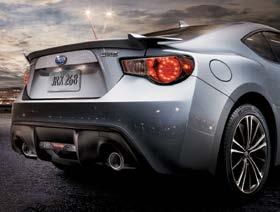

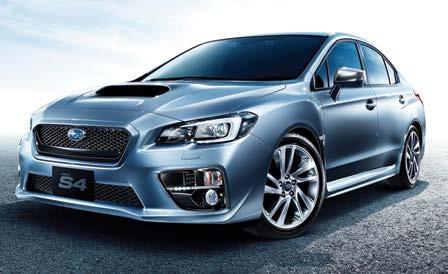




























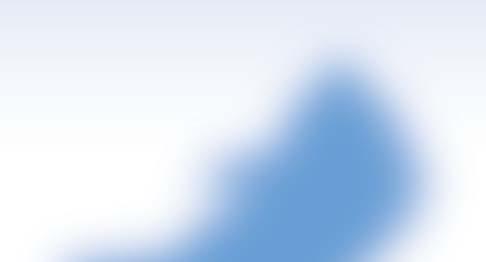

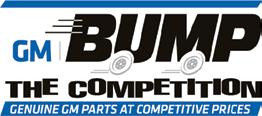











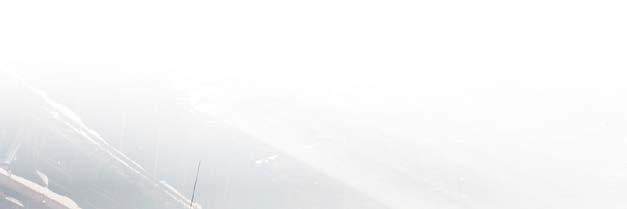














By Paul Hughes Autobody News
Jim Moyer expected to close on the sale of his body shop Aug. 28. He’s retiring, and he’s not alone.
He and his collision center comrades countrywide are linked by the work and that they’re exiting the industry. The comparison ends there, and then it’s all contrast.
Running a body shop is personal: multi-generational care and craftsmanship defined by relationships.
Leaving it is just as heartfelt. Individuals who sell, do so for highly individualized reasons.

Four Sales
Moyer’s Auto Body is in rural Clearfield, PA, pop. 12,000. Moyer was mayor for 13 years.
He’s worked at the shop more than 47 years, running it two-thirds of that time. Of former employees, one had 42 years’ experience, two had 29 apiece, and the “rookie” had 14. The top veteran retired; the youngster’s gone to seek his fortune in heavy construction.
“In Central Pennsylvania, we have one helluva time trying to find techs,” he said.
Meanwhile, Frank Hodulik’s exit in June was a bit of a “honey-do” — his wife Debra Hodulik wanted it.
“She turned 65 in April and I said, ‘What do you want for your birthday?’ and she said ‘to retire,’” Frank Hodulik said.
The duo co-owned Frank’s Auto Body for 40 years; they sold their two locations in Henderson, NV, in June to Brightpoint Auto Body Repair, a growing MSO in Memphis, TN.
Frank Hodulik, also 65, has been in the industry for a half-century — he ran the body shop for a Delorean dealership in New Jersey, out of trade school. Health issues were also involved in selling, but the main driver
was loving his wife.
“I made her a lot of promises over the years; I said when you’re done I’m done. I couldn’t do it without her,” he said.
pay monthly dues for access to the land, to camp and fish.
“When he told me he was ready to sell, it was to do what he wanted to do,” Patton said.

Patton has done paintless dent repair for 29 years and co-owned body shops over the last 10. He’s adding 3,200 square feet to the 8,000 already there, and plans to get to three or four shops in the market.
Bill Beckett’s been in body shops all his life. “I was born into it.”
His granddad founded Chestnut Auto Body — “it used to be on Chestnut Street” — in North Attleborough, MA, in 1952.
Brian Patton co-owns American Collision and Hail Repair in Wichita, KS, with Paul Blissett and Keith Hellyer. They bought it from seller Aaron Lonergan earlier this year, who Patton said was shifting to a more recreational lifestyle.
“He has some land, about 160 acres,” near Mulvane, KS, Patton said. “He built a big pond, sold his house, moved into his fifth wheel.” Lonergan now runs a “Jeep club” where people

MISSISSIPPI
MAC HAIK CHRYSLER DODGE JEEP RAM 5395 I-55 North Jackson, MS 39206 (601) 500-5555
SOUTH CAROLINA
SPARTANBURG CHRYSLER DODGE JEEP RAM 8200 Fairforest Road Spartanburg, SC 29303 (800) 849-3691
SOUTH CAROLINA
STATELINE CHRYSLER JEEP DODGE RAM 800 Gold Hill Road Fort Mill, SC 29745 (800) 533-5844
Beckett’s dad moved the shop in 1978. Beckett began work there in the 1980s, inheriting it last year, on his father’s death. But he can’t run it anymore. A health scare for Beckett, 59, was a catalyst.
“Doctors gave me an EpiPen,” he recounts. If he needs an EpiPen to stay in the game, “I’m not staying.”
But regulatory restrictions and insurance company constraints were the nail in the shop’s coffin.
VIRGINIA
SAFFORD CHRYSLER JEEP DODGE RAM 10671 Patriot Hwy. Fredericksburg, VA 22408 Phone: (540) 735-1130 Fax: (540) 891-9685
WEST VIRGINIA
WALKER CHRYSLER DODGE JEEP RAM 102 Orchard Park Road Hurricane, WV 25526 (800) 888-8264
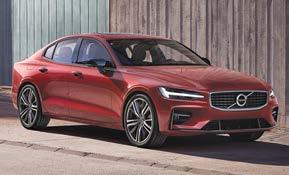


Effective in Q4 2024, the 3M Clean Sanding System will be offered globally, including the U.S., Canada, Europe and Korea.
Dust extraction is an important tool for driving productivity and efficiency in the body shop, where dust is a core concern. A clean shop can mean less rework and better cycle times.
The 3M Clean Sanding System includes a dust extractor, pneumatic and/ or electric random orbital sanders, mobile workstation, organizer and a wide selection of quality abrasives and PPE.









Hours: Mon-Fri 7:30-6 Sat 8-5 rhminiparts@hendrickauto.com

Also, effective Dec. 31, the collaboration between Festool and 3M Automotive Aftermarket will come to a close. 3M will no longer offer Festool products after the end of 2024.
Learn more at 3M.com/ CleanSandingSystem.
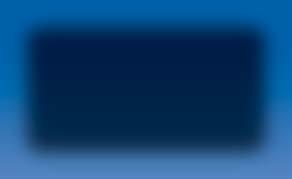



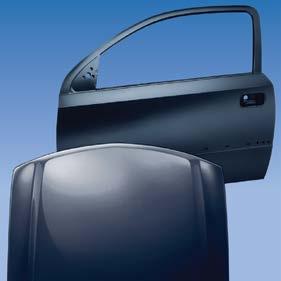




Local labor rate reimbursement in Massachusetts runs $40 an hour. Nearby Rhode Island gets $75 to $80.
Acquirers are active in New York, New Hampshire and Maine, but “no real consolidators are pushing here,” Beckett said.
Beat Goes On
So Beckett is selling his shop — but not as a shop.
He’s expecting possible warehouse interest in two buildings totaling 9,000 square feet. There’s also a chance for the proverbial “highest and best use” of the two acres of land.
“Real estate’s really big here,” he said. “New condos are going for $550,000.”
At one point he thought a buyer who’d won $15 million in a state lottery would bite. “He wanted a place to store his cars,” Beckett said. “His wife said no.”
Plenty of others are saying yes, at least to selling.
After 20 years of big consolidators getting the high hat from Hodulik, Brightpoint bought his Henderson shops.
“Guys with 40-plus years in the industry are moving on,” said principal Paul Williams, whom Hodulik knew.
whose daughter still works at Frank’s.
Brightpoint has also bought from pre-retirees in Idaho. It has two locations now and plans four by yearend.
“Boise’s a great market for us,” Williams said.
Autobody News also found retiring owners selling shops in Bozeman, MT, Bremond, TX, and parts of Michigan. Consultant Laura Gay has helped sell shops for hopeful recreators in, for instance, Arkansas.
Moyer agrees with Williams and Hodulik — “it’s hard, dirty work” — and found consolidators didn’t want to do it either.
“We were looked at by an MSO but they said, ‘We’re not coming to Clearfield,’” Moyer said.
The shop had nine working bays and a paint booth, expanded four times in 47 years, and “did a large volume.” It’s been closed a year for lack of staff and is getting ready to re-open.
“I have a couple from New York City coming to buy it,” Moyer said. They look to be in their late 30s or so, and the man “worked in a body shop; that’s all he’s ever done.” Now he wants to own one.
The best part?
Anderson Automotive Group sold two of its South Carolina dealerships to Escude Automotive Group. The transaction, finalized Aug. 12, involved Chevrolet Easley in Easley and Fred Anderson Nissan of Greer, which were part of a seven-dealership acquisition from MCE Automotive Group in 2023.
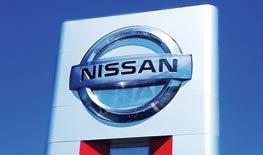
The dealerships have been renamed Escude Chevrolet of Easley and Escude Nissan of Greer, respectively.
The move allows Anderson Automotive Group, established in 1955, to refocus its efforts on optimizing its remaining 16 dealerships across North Carolina and South Carolina, representing 12 different brands.
The buyer, Escude Automotive Group, is led by Mark Escude II, who had previously been part of the leadership team at MCE Automotive.
“The Escude family has always taken great pride in offering our customers a world-class experience. Our family is fortunate to call the upstate region home, and we’re eager to get back to work serving our local community,” said Escude.


“They’re bringing a couple

“After completing the MCE transaction last year, we decided to divest these two stores and direct our resources to other needs and opportunities,” said Fred Anderson, chairman of Anderson Automotive Group.
The sale was facilitated by The Presidio Group, a firm specializing in mergers and acquisitions within the automotive retail sector. “It was a smooth and expertly managed process, and we appreciate the knowledge and connections that Presidio brought to the transaction,” said Michael Anderson, CEO of Anderson Automotive Group.



ALABAMA
Serra Kia
Birmingham 800-426-4351 205-856-6600 M- F 8am-5pm jessica@serraparts.com
FLORIDA
Deland Kia
Deland 386-734-7800 (386) 822-9278 Fax parts@delandkia.net www.delandkia.net FREE Local Delivery
Kia of Orange Park Jacksonville
904-771-6078 (904) 674-0221 Fax
M-F 7-6; Sat 8-5 dcarr@kiaoforangepark.com
Kia of Vero Beach Vero Beach 772-770-9887 (772) 562-0732 Fax M-F 7:30-5 mikep@toyotaofvero.com
Rick Case Kia Sunrise 954-364-3079
M-F 7:30-6; Sat 8-5 troythomas@rickcase.com
GEORGIA Sons Kia McDonough 678-783-2193 (678) 783-2298 Fax M-F 7:30-6; Sat 8-4
Kia of Greenville Greenville 864-516-2700 (864) 520-8981 Fax aburgos@kiaofgreenville.net
CMA’S Colonial Kia
Chesterfield 804-431-3838 (804) 431-1646 Fax M-F 8-5; Sat 8-1 dwomack@colonial.cmacars.com
Ourisman Kia of Fairfax Fairfax (703) 934-8877
x227, 237 or 254 M-F 7am-7pm; Sat 8am-5pm mmunn@ourismancars.com www.ourismankiaoffairfax.com
*Kia Genuine replacement parts sold but not installed by an Authorized Kia Dealer are covered for 12 months from purchase date, regardless of mileage, for the part only, and any labor charge is the consumer’s responsibility.
By Brian Bradley Autobody News
Artificial intelligence (AI) is manifesting major applications in writing and verifying both insurance claims and repair estimates in the collision industry.
But while collision repair innovators believe AI increases the agility, accuracy and speed of body restoration, efforts to expand AI in the sector are ramming into an unclear policy landscape and a labor force that fears resultant widespread job loss. From venture capital to AI workforce training to virtual driving assistants, the collision repair industry is witnessing significant investments in AI that propose to increase value for independent shops and original equipment manufacturers (OEMs) alike.
Collision repair technology providers told Autobody News how they are using AI to simplify, streamline and expedite insurance and repair processes. Because AI use cases are a broad and complex topic, this article touches on only a portion of these companies’ AI-related activities.
AI Applications in Collision Repair CCC Intelligent Solutions started its AI efforts about 10 years ago, CCC Vice President of Product Management
Mark Fincher told Autobody News. “We’re not jumping on the hype cycle with AI; we’ve been at this for a very long time,” he said.
Over that time, the 44-year-old company has seen its AI-powered software evolve from merely being able to identify damage based on photos, to being able to predict damage costs within a range, and more recently, into a
designed the function — which enables AI-powered creation of initial damage estimates — specifically for body shops. The human can set the app to automatically accept estimates that clear a certain threshold; for example, if the app reveals a 99% chance a bumper needs replacing, Fincher said.
Another legacy company building out its AI capabilities in the collision
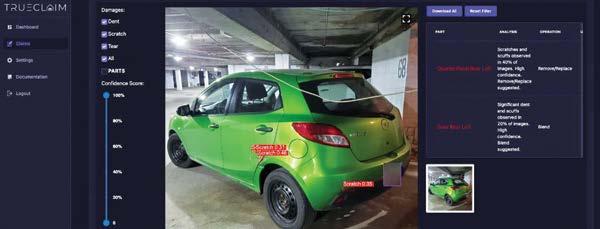
platform that can convert photo inputs into very specific estimates, he said.
The original CCC AI model allowed consumers “to take a few photos, submit those photos, and then have the AI make a prediction of … what the consumer should expect that [repair] to cost,” Fincher said. More recently, in October 2023, CCC launched Mobile Jumpstart in its CCC ONE app. CCC

Audi Part Professionals are experts on collision parts, replacement components and mechanical items.
repair and estimates realm is Mitchell International.
Olivier Baudoux, Mitchell senior vice president for global product strategy and AI, framed his company’s AI-powered capabilities under four “intelligent” categories of the collision estimate process: photo capture, triage, estimating and review.
Both CCC and Mitchell report their
Audi Birmingham Irondale
205.986.7410
205.986.7438 Fax
Order Audi Genuine Parts from these select dealers.
AI shortens the estimate process.
Fincher said his platform can finish 80% of a claim estimating process within two minutes. The full estimate process normally takes about 15-30 minutes, he said.
Baudoux said Mitchell’s estimate creation function pre-populates 70% of the lines of an estimate, on average, significantly reducing the roughly 30 minutes it normally takes to write an estimate.
Trueclaim founder and CEO Elie Lloyd said his platform’s AI assists in triaging crashed cars into three categories: fixable with cosmetic damage, fixable with deeper damage and total loss.
Being able to identify a total loss upfront is particularly useful for insurance companies and consumers, Lloyd noted, as it saves money on towing and storage expenses, and avoids unnecessarily occupying shops’ real estate with rattletraps instead of repairable cars.
Optimizing the estimate process isn’t AI’s only value proposition in collision repair.
As multi-shop operators continue to onboard new appraisers, they want to ensure the new hires are learning best practices, and may use Mitchell’s review
Audi Gwinnett
Duluth
678.258.2535
770.476.9311 Fax
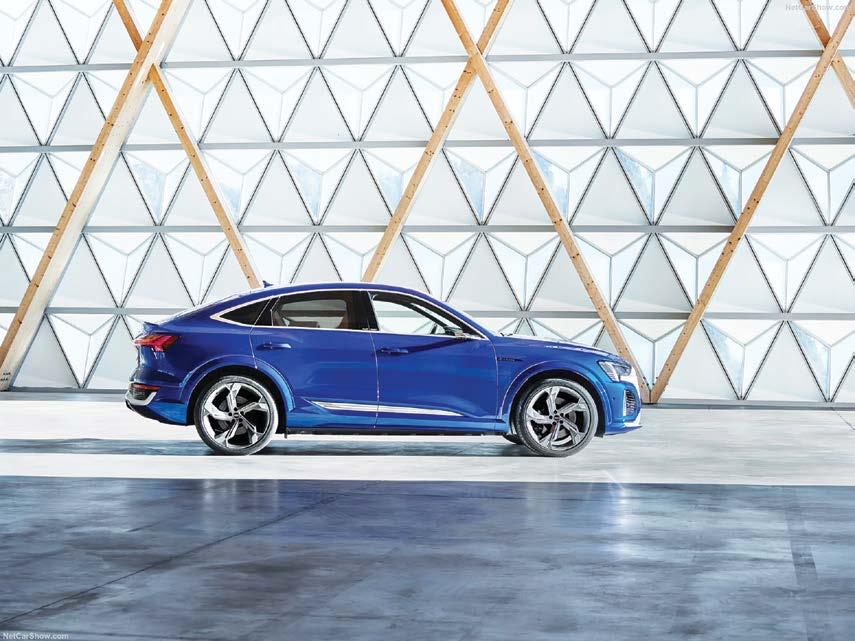
M-F 7am-6pm; Sat 8am-4pm daniel.williford@audiofbirmingham.com www.audiofbirmingham.com
Audi North Miami
North Miami Beach
305.952.5960
305.944.4009 Fax
M-Sat 8am-6pm amartinez@audinorthmiami.com www.audinorthmiami.com
Audi West Palm Beach
West Palm Beach
866.441.3309
561.615.4175
561.615.4179 Fax
M-F 7:30am-7pm; Sat 8am-5pm parts@audiwpb.com www.audiwpb.com
M-F 7:30am-6pm parts@audigwinnett.com www.audigwinnett.com
Regardless of the age of your customer’s Audi, Audi dealers have access to over 200,000 part numbers and are supported by a nationwide network of distribution centers to help ensure non-stocked parts are delivered the next day.
solution, for instance, to coach new hires on critical skills, Baudoux said.
“It’s not necessarily about just capturing cost-saving or other opportunities like that,” he said. “It’s just about making sure as well that the proper and safe repairs are being enforced, and that they’re working with what they consider to be the right discipline and philosophy.”
Fincher noted AI also holds promise both in completing mundane, time-consuming tasks as well as determining optimal workflows based on technicians’ skills.
“There are tons of opportunities to help us as humans combine [natural language processing] with machine learning or large learning models to help that blue-collar technician that is not going to use AI to have a robotic hand come over them and start repairing the car,” he said. “But instead of searching through 20, 30, 40 pages of repair procedures to find the thing they want, maybe they can get to it really quick with a natural language query into repair procedures.”
AI may soon be able to discern the speed that shops swamped with cars can complete repairs if certain damages are assigned to specific technicians who excel in the specific car being repaired, Fincher said. AI may
to “get everything out 0.4 days faster, or all cars out 1.2 days faster,” he added.
In addition to training, another AIfocused company involved in the collision repair sphere is customer review automation platform Propel.
The company uses AI to harness collision repair shop customers’ reviews from platforms like Google, CarWise, Yelp, the Better Business Bureau, Facebook and other platforms, Propel Chief Product Officer Gaurav “Rav” Mendiratta told Autobody News.
From there, the service allows body shops to provide one-click, AIautomated responses to customer reviews on Google, Yelp, etc., tailored to the specific review.
The company has also integrated with CCC ONE, Mendiratta said. As soon as a car logged in the CCC ONE system is picked up, Propel gets notified, at which point Propel automatically texts or emails the customer, via the repair shop, to remind them to review the business on a specified online rating platform.
“We just provide them the link and 30 to 40% end up leaving a review,” Mendiratta said. “Verbally, if you ask a customer [to review], the conversion rate is less than
actually end up writing a review. With our software, because of the automation and the reminders, 25 to 35 end up leaving a review.”
Another industry application for AI is assisting in subrogation claims.
Tractable announced a partnership with PartsTrader in October 2023, which integrated the latter’s historical parts price data into Tractable’s reviewer software.
Tractable said the partnership has enabled insurers to swiftly and accurately review subrogation claims, referring to the adjudication of amounts owed between insurance companies after an accident depending on which party was found liable.
There are typically 13 to 15 automotive parts per repair estimate that need to be checked for price, and it could take two to five minutes per part, Tractable CEO Venkat Sathyamurthy told Autobody News.
“What this means is the time it takes to process the subrogation claim gets longer, and then the claim remains open in the back end,” he said. “When a subrogation claim comes in, we automatically look at the parts that are there and we connect with PartsTrader, and then we improve the speed and efficiency.”

The following dealerships are eager to serve your needs. Call your local Subaru collision parts specialist today!


Tractable has trained its AI on more
Stivers Decatur
Subaru
Decatur (404) 248-1888
Fax (404) 425-5800
Mon.-Fri. 7:30-6; Sat. 9-5 dway@stiversonline.com www.stiverssubaru.com
Subaru of Gwinnett
Duluth (678) 475-7245
Mon.-Fri. 8-5; Sat. 8-3 parts@subaruofgwinnett.com www.subaruofgwinnett.com
Troncalli Subaru
Cumming (770) 889-8951
Direct (678) 341-4220 Fax (678) 341-4221 www.troncallisubaru.com
than 500 million images to accurately assess damage, Sathyamurthy said. The company continuously trains its AI on damage identification, in part, by having people tag and label images of damaged cars, and then upload those files into Tractable’s system, he said. From there, Tractable’s AI continues learning based on the data provided by appraisers and service providers, according to Anderson.
That process is particularly important as new car makes and models roll out, which introduces fresh variables to the damage assessment process.
Data on automotive part types and prices form the backbone of AI’s examinations and recommendations around repair estimates and insurance claims.
Collision repair technology providers glean their data from a variety of sources, sometimes partnering with other companies and other times sourcing from their own repositories.
CCC uses a motor database including all OEM parts, but shops can use the company’s AI to tailor those part selections, drawing from embedded code tables, Fincher said. Mitchell has compiled OEM and aftermarket part prices and product numbers for nearly 75 years, which
Jim Armstrong
Subaru
Hickory (888) 905-6135
(828) 322-9372 opt 5 Mon.-Fri. 8-5
parts@jimarmstrongsubaru.com www.jimarmstrongsubaru.com
Parkway Subaru
Wilmington (800) 424-9434 (910) 793-8710 Fax Mon.-Fri. 7-6; Sat. 8-2



provided a sturdy foundation for the company’s AI development, Mitchell Senior Vice President for Repair Sales Jack Rozint told Autobody News.
The company’s database can also distinguish whether used parts are recycled or aftermarket, and Mitchell develops its own labor times, Rozint said.
Though Tractable uses PartsTrader data for parts availability and pricing information in subrogation disputes, Santhyamurthy emphasized his platform itself is, at its core, an open integration platform.
Tractable’s specialization is using AI to provide more accurate damage assessments, working with firms like parts recyclers to understand granular details about parts grading, including whether a part is reusable, he said.
Recyclers may use Tractable to enhance their vehicle purchasing, where Tractable’s AI is combined with in-house vehicle assessment and customer purchasing logic, Anderson said.
Tractable Head of Automotive Jimmy Spears said his company’s AI excels at distinguishing car parts from one another and discerning if they are damaged. If parts prices need to be brought in, that can happen through an open process with Tractable’s customers, he said.
After determining whether damage
exists, “we can refer to a database and pull in the parking tax,” Spears said. “If you want to know the parts price, get your database, and we’ll tell it to you.
But what you want to know is, ‘Is that a car?’ ‘Yes.’ ‘Is that car damaged?’ ‘Yes.’ ‘Do you have to repair or replace that part?’”
Skeptical workforce attitudes toward AI are a well-publicized hurdle to development of the technology in the collision repair sphere.
But other challenges facing AI companies in the industry include data privacy and a lack of clear policymaking, executives told Autobody News.
When snapping photos of crashed cars, customers’ personally identifiable information (PII) such as license plate numbers would be uploaded into the system unless there was a built-in protection mechanism, said Trueclaim’s Lloyd.
Further, customers’ names, addresses and phone numbers are naturally part of insurance claims. As a third party in the collision repair process, Trueclaim must be mindful of this when insurance companies or repair shops send claims information to the company, Lloyd said. License plate numbers are blurred out as soon as they’re uploaded, for example, he said.

REED NISSAN
Orlando 407-295-7379 (407) 291-2541 Fax
M-F 7:30-6, Sat. 7:30-5 parts@reedmotorsinc.com www.reednissan.com
SUTHERLIN
Vero Beach 772-778-3600 (772) 778-1927 Fax
M-F 7:30-6, SAT. 8-3 wstevens@sutherlinautomotive.com
Another major challenge in AI development and adoption in the collision sphere is a lack of policymaking.
Propel’s Mendiratta would like to see the federal government craft thoughtful AI policy, noting if the task is left to state governments, it could generate winners and losers.
For example, the California Consumer Privacy Act only covers companies of a certain size that do business in the state, he said. Other regional policies like the European General Data Protection Regulation govern all entities that process PII and that also do business anywhere in the EU territory, Mendiratta added.
Lloyd agreed there is a current lack of policies guiding AI usage. But he added that regulation should treat all AI-focused companies fairly and noted AI’s great potential.
Lloyd compared the current stage of AI development writ large to the internet’s regulation-scarce infancy phase.
“It’s kind of in a baby stage, and nobody really knows how this can be done, how it can be used,” he said. For “everybody that is using AI — can you guarantee this fairness? That’s really the idea of making policy. Otherwise, if this is not guaranteed, then we’re breaking ourselves.”


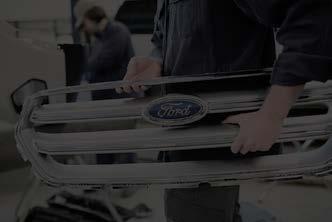

Mitchell, an Enlyte company, announced it is teaming up with PAVE to automate vehicle inspections and conditioning. Using Mitchell’s cloud-based appraisal solution, comprehensive data and open platform with PAVE’s proprietary artificial intelligence (AI) and guided image capture application, U.S. and Canadian organizations will be able to generate graded condition reports from uploaded photos. These reports will identify the vehicle damage and include estimated costs for parts, labor, repair or replace operations, and regional taxes.
PAVE will be the latest AI innovator to integrate its machinelearning and computer vision models with the Mitchell Intelligent Open Platform, which powers the company’s full suite of intelligent solutions. Designed to provide flexibility and scalability, the platform enables organizations to use Mitchell’s technology with their own AI, Mitchell Intelligent Damage Analysis, or AI developed by a third-party provider.

Duluth
678-812-8545
M-F 8-5, Sat. 8-3 iogparts@gmail.com www.Infinitiofgwinnettparts.com
Hours: M-F 7-6; Sat 7-2:30 jmcnamara@griecocars.com Gus Machado Ford HIALEAH 305-822-8338 305-825-3018 Fax Hours: M-F 8-7; Sat 7-4 avalle@gusmachadoford.com
By John Yoswick Autobody News
While body shops, insurance companies and even the estimating system providers aren’t all seeing eye to eye on the issue of blending for color match, a recent panel discussion offered one point of agreement: blending is not the same now as it was decades ago when the prior formula for establishing blend times was developed.
“It does make you realize that things have changed,” Michael Lastuka of State Farm said at this summer’s Collision Industry Conference (CIC) of recent paint company training on blending his company has sent staff to, which he called “enlightening.”
The CIC Parts and Materials Committee hosted the panel discussion on the topic about a year after CCC Intelligent Solutions announced it was giving users more flexibility to determine blend times and eliminating “50% of full refinish time” formula. Audatex made a similar change some months later.
Part of what triggered estimating companies to reexamine the blend formula was a 2022 study conducted by the Society of Collision Repair Specialists (SCRS) that the association believes demonstrated that blending takes more time than a full panel refinish, rather than less.
only had about 42 to 46 toners on a mixing machine,” said Ryan Brown, a technical manager for AkzoNobel. “You really only had a range of some solid toners, a couple metallic toners, and at one point there was only one pearl on a mixing machine. We started out with just a white pearl. As
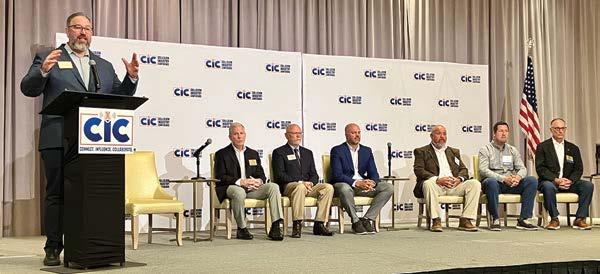
During the panel discussion at CIC, several paint company representatives discussed things that
the years went by, we added a couple more.
“And then in the 1990s, we started expanding into having a couple more different effects on mixing banks,” Brown continued. “The introduction

800-844-4644 Fax M-F 7:30am-5pm wmyers@chevyman.com
- 6pm jwash@jimhudson.com
704-598-4020 704-596-9989 Fax M-F 8am-5pm www.parkscharlotte.com
Fax
7am - 6pm; Sat 8am - 4pm Benny.bishop@hendrickauto.com
started making colors more complex. But we really never adjusted anything [related to blending] from that time. Each of these things made refinishing a car slightly more difficult. And we’ve only added to that over time.”
Mixing machines today, he said, often include 90 or 100 toners or more.
“On any standard mixing machine from any manufacturer, you’re going to have a range of glass flakes, colorshifting pigments, a lot more highly chromatic, solid toner pigments that we didn’t have before,” Brown said. “We’re now dealing with nano translucent pigments to get more chromatic colors, more transparency, get that kind of candy-looking effect. It greatly changes how we prepare the car, how we spray them, how we apply them. And it adds more time to the operations as well.”
Mark Jahnke, a technical coordinator for Axalta Coating Systems, said there’s more that contributes to variation in the time required to blend than just changes to refinish materials.
“The panel location and size of it

Fax M-F 7am - 7pm; Sat 7am - 5pm Sun 9am - 3pm
Co-President & Publisher
Nathan Gregory
Co-President & Publisher
Paul Stepanek
Editor Abby Andrews
Contributing Writers
Mike Anderson,Stacey Phillips, John Yoswick, Cole Strandberg
Advertising Sales
Joe Momber, Norman Morano, Steve Sklenar
Office & Media Manager
Kelly Cashman
Director of Digital
Bryan Malinski
Design Director
Vicki Sitarz
Art Director
Rodolfo Garcia
Accounting & HR Manager
Heather Priddy
Content Manager
Randi Scholtes
Serving Illinois, Iowa, Indiana, Kansas, Kentucky, Michigan, Minnesota, Missouri, Nebraska, North Dakota, Ohio, South Dakota, Wisconsin and adjacent metro areas. Autobody News is a monthly publication for the autobody industry. Permission to reproduce in any form the material published in Autobody News must be obtained in writing from the publisher.
©2024 Autobody News, LLC.
Autobody News P.O. Box 1516 Carlsbad, CA 92018 (800) 699-8251 (760) 603-3229 Fax www.autobodynews.com editor@autobodynews.com





- 5:30pm partsmanager@downtownnashvillemotors.com www.downtownhyundainashville.com
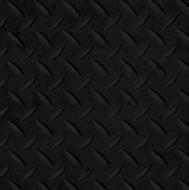
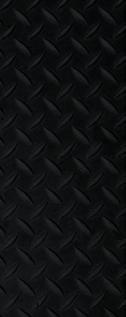

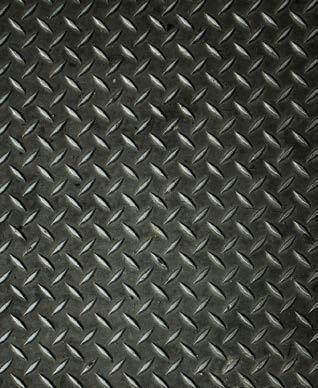



Sat 7:30am-5pm rharris01@vtaig.com
Jim Ellis Volkswagen Atlanta 800-653-5547 770-454-7711
Fax: 770-986-0001 M-Sat 7:30am-7pm vwwholesaleparts@jimellis.com
757-687-3465
Fax: 757-687-3514 M-F 8am-5pm volkswagenparts@checkeredflag.com
Does it have a lot of body lines, style lines, shaving in the vehicle, or is it a big flat panel with less contours that might prove to be a difficult blend? You might need to use a little bit more space or room.
“The location of the repair: If the repair is located eye line or higher, it generally becomes more visible,” Jahnke continued. “Something down lower you can kind of shade and trick and work your way around a blend in a smaller area than you may need up higher on a vehicle. We’re seeing smaller and smaller cars. A bedside on an F-150 is a pretty big area for a blend versus a small quarter panel on a Mazda 3 or a Mazda 6 that’s only a foot-and-a-half or two feet long and makes for a really challenging blend to keep within the panel.”
The age of a vehicle also can impact blending, Jahnke said.
“The average age of vehicles in the U.S. now is 12.6 years, so for every new vehicle coming off the line, there’s a car that’s about 24 or 25 years old still on the road,” he said. “Coatings age over time. A car in Florida is going to have a different degradation of that finish versus a car in the Pacific Northwest. Each is going to have a specific characteristic on that coating that needs to be addressed prior to the blend operation. A lot of times we need to restore that condition to


OEM standard or as close as we can prior to refinishing, or we’ll have a mismatch of the blend panel.”
Paint protection film or ceramic coatings also may need to be removed prior to a blend, he said.
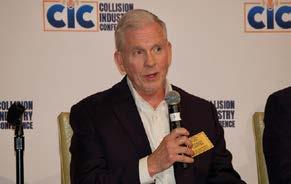
blending that his company has sent personnel to has made them “realize that things have changed.”
SCRS’ Aaron Schulenburg, who chairs the CIC Parts and Materials Committee, said these types of variables are part of why the CCC and Audatex estimating systems no longer have a set formula for blend times. In a 2022 response to a Database Enhancement Gateway (DEG) inquiry, Schulenburg said, MOTOR Information Systems — which develops the underlying database used by CCC — noted its refinish times take into consideration

“variables such as panel size, material, shape, contour, position and color” — many of the same variables the paint company representatives at the meeting pointed to as well.
This is the kind of information, Schulenburg said, shops should consider when determining blend times on a given vehicle — and can point to when discussing those blend times with insurers or others. He acknowledged he’s talked to shops who have done this successfully, and others who have had less success moving away from the prior blend formula that no longer exists within CCC and Audatex.
“But if you’re saying ‘It’s simply a matter of what the study says,’ I think that leads to a less productive outcome.”
AARON SCHULENBURG SCRS
“From my perspective, it is the difference in the conversation that leads to the difference in outcome,” Schulenburg said. “So there are some repairers who I’ve spoken to who lean heavily on the types of material [about variables related to blending] that we looked at today, and others
who simply lean heavily on just the results of the [SCRS blend] study and say, ‘Well, the study says…’
“I think the study was always intended just to create conversation that motivated the industry to rethink the process and the technology and things along those lines. But if you’re saying ‘It’s simply a matter of what the study says,’ I think that leads to a less productive outcome.”
An Insurer’s View State Farm’s Lastuka also participated in the panel discussion.
“I was at another industry event, and I got to meet Jeff [Wildman of BASF], and we struck up a conversation and he said, ‘You know, things have changed dramatically,’” said Lastuka, OEM and auto industry liaison for State Farm. “He was kind enough to come to our vehicle research facility in Bloomington. There was such a demand for him to come back because the information was so new, so fresh, so enlightening that we even taped the segment so it could be viewed many times. And then he was kind enough to invite us out to his training facility, and we just got another invite from another paint company. And we’re going to take full advantage of that because it does open your eyes, it does make you realize that things have changed.”

PPG announced a partnership with software firm Flashback Forward, Inc. to offer FinalQC, a mobile quality control application designed to enhance efficiency for the collision repair industry.
FinalQC helps collision and original equipment (OE)certified collision shops capture the full value of their repairs by identifying repair quality issues in real time, and enhance customer experiences by ensuring accurate repairs and consistent quality.
The intuitive mobile interface simplifies product verification and quality control, while allowing shops to incorporate customizable standard operating procedure checklists. PPG customers in the U.S. should contact their PPG sales representative for more information about FinalQC. For more information, visit finalqc.com.


